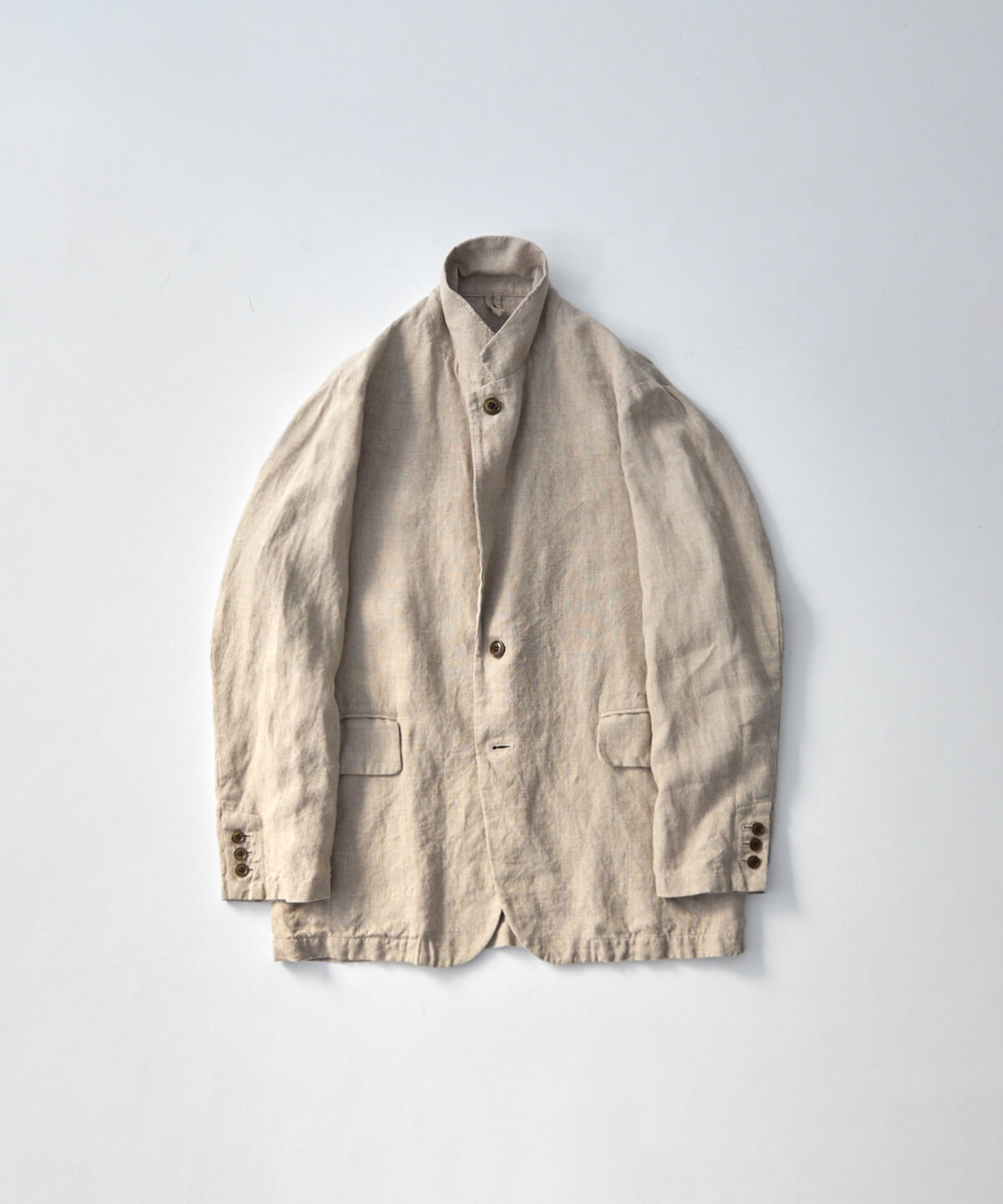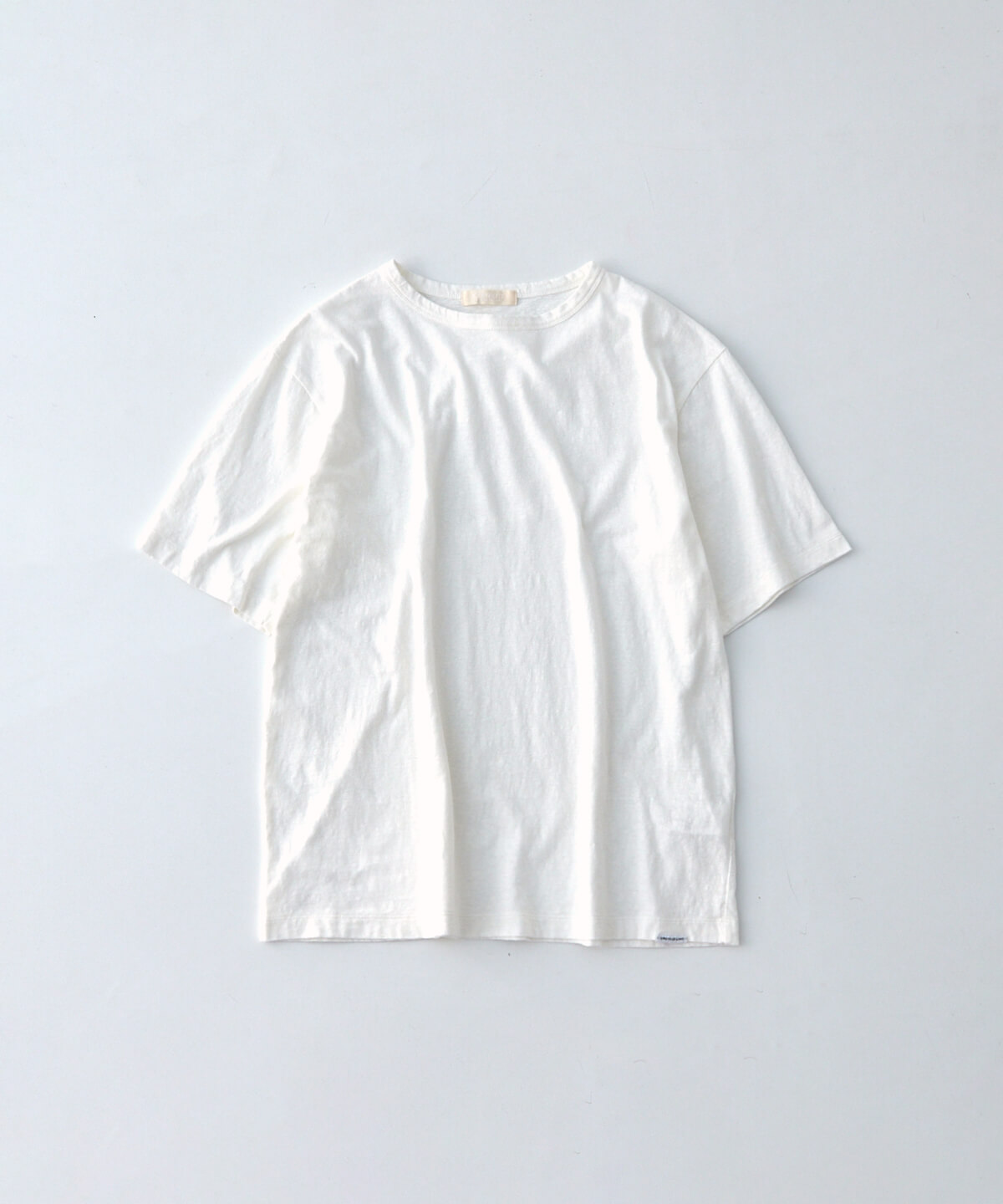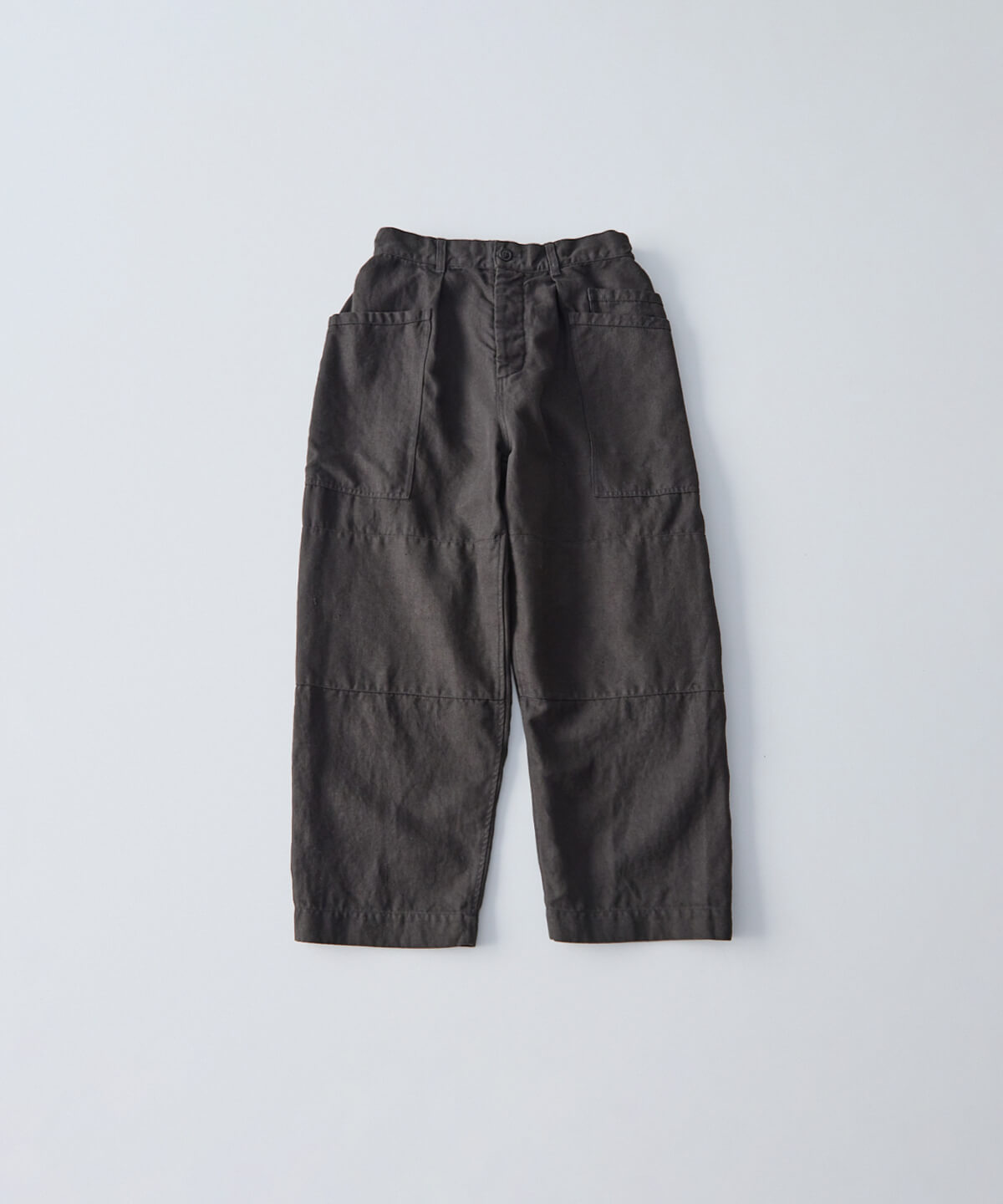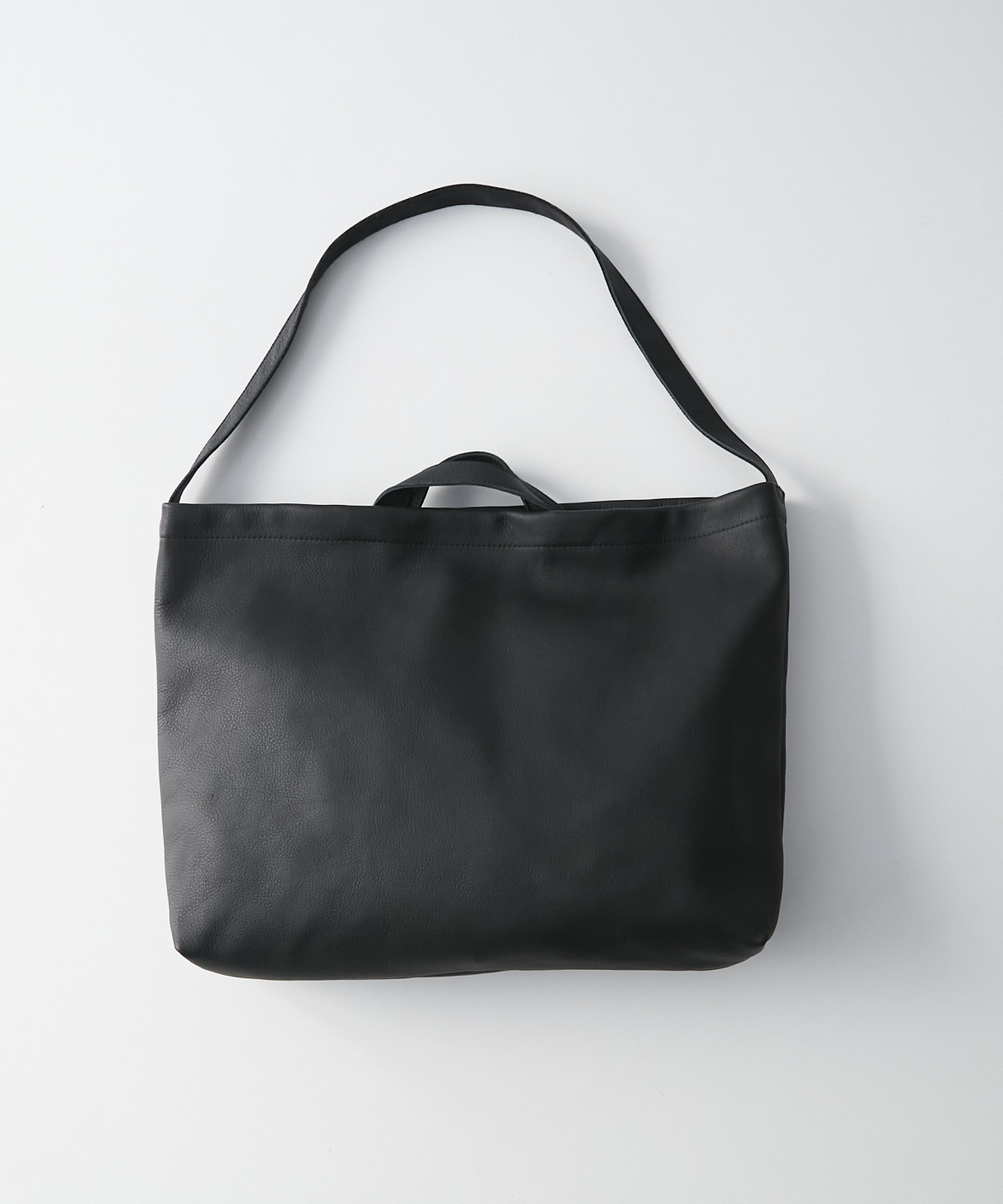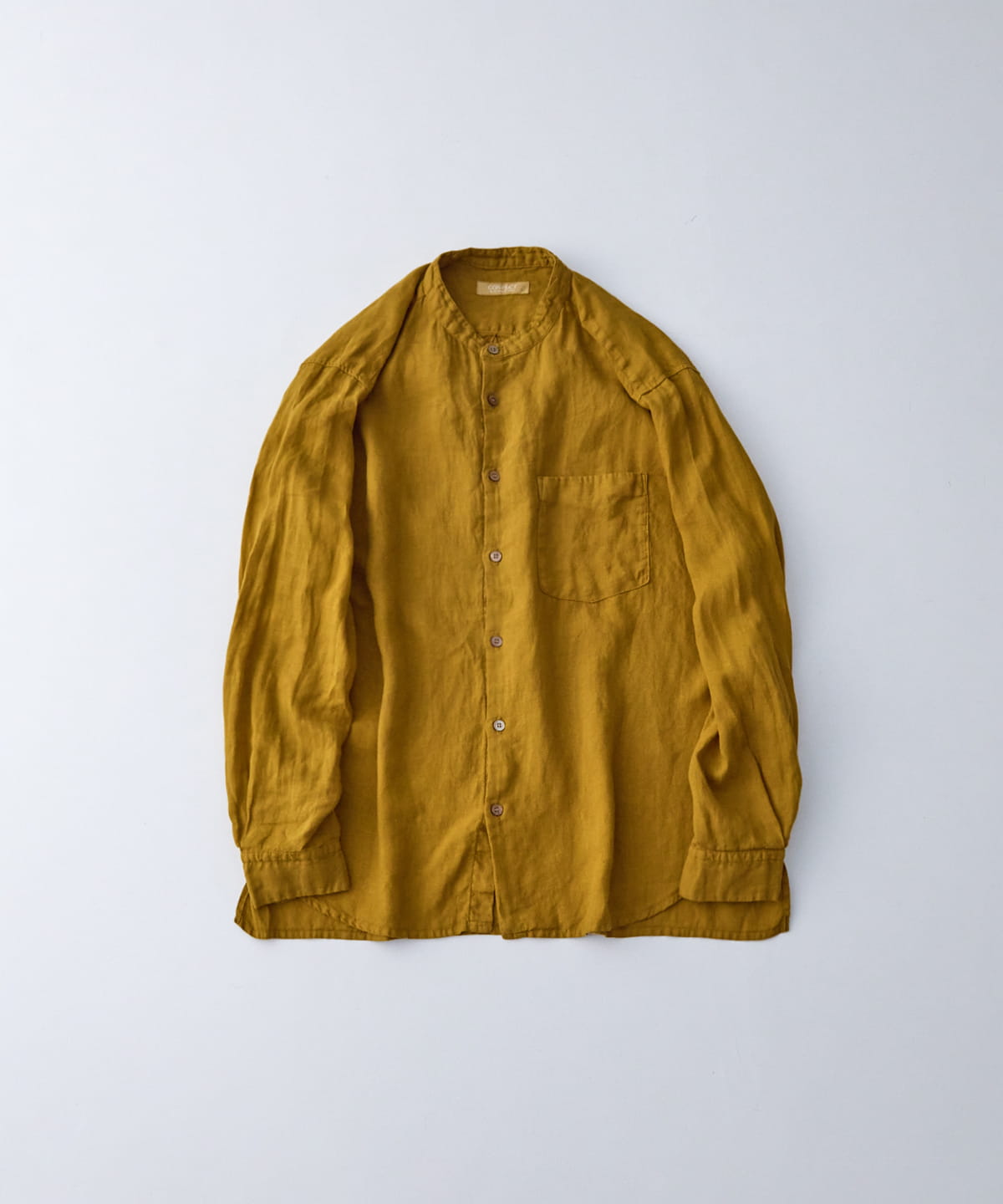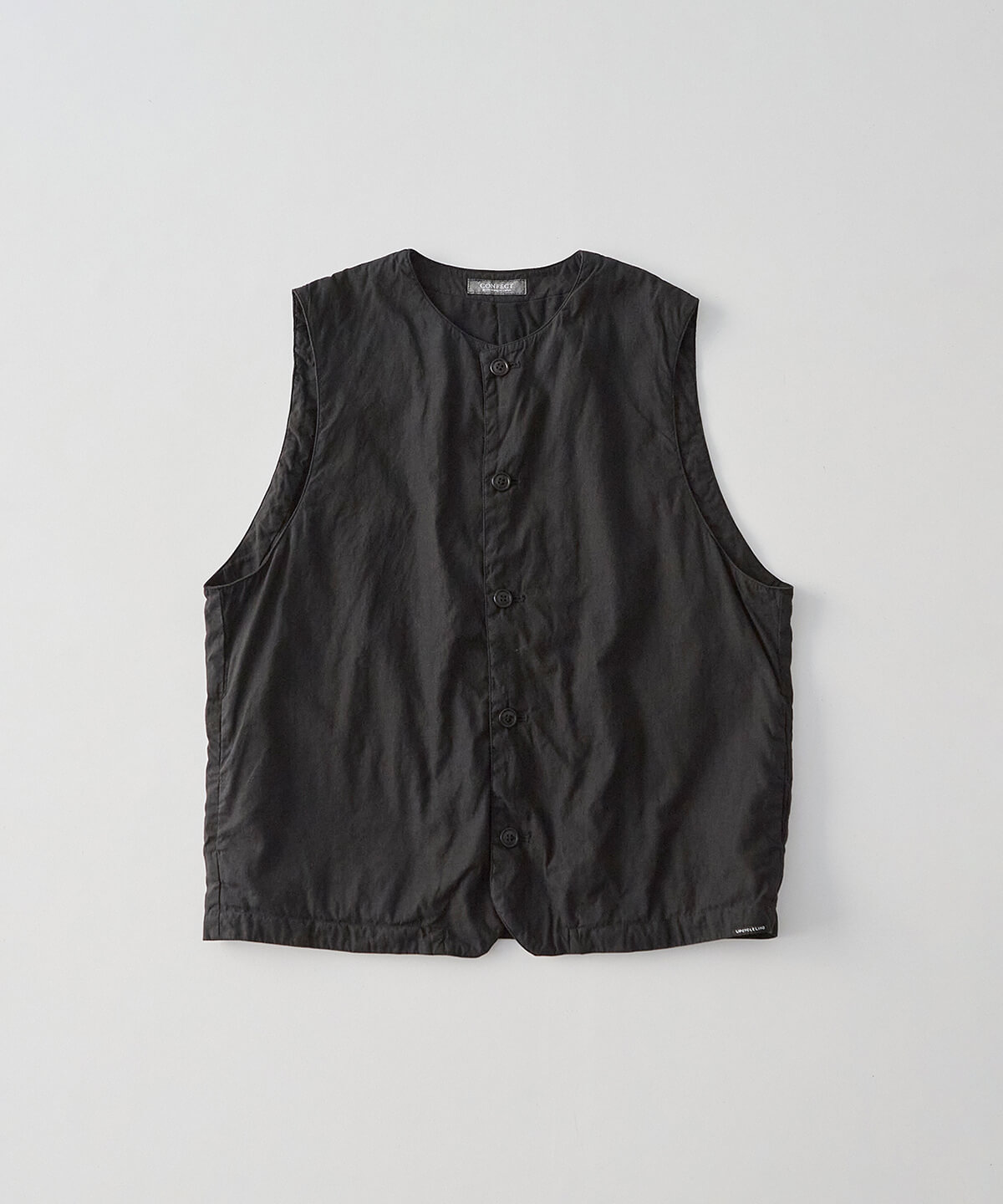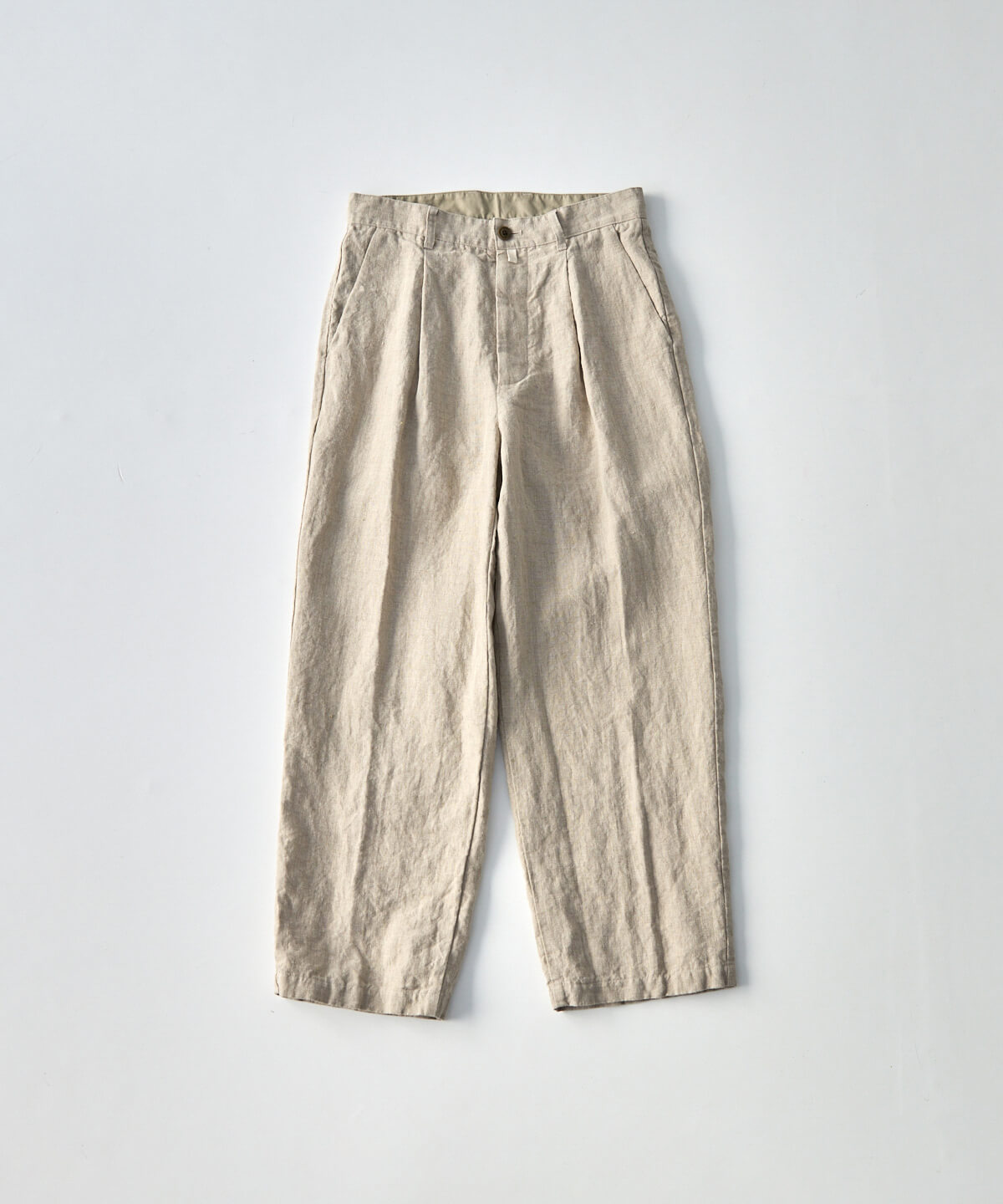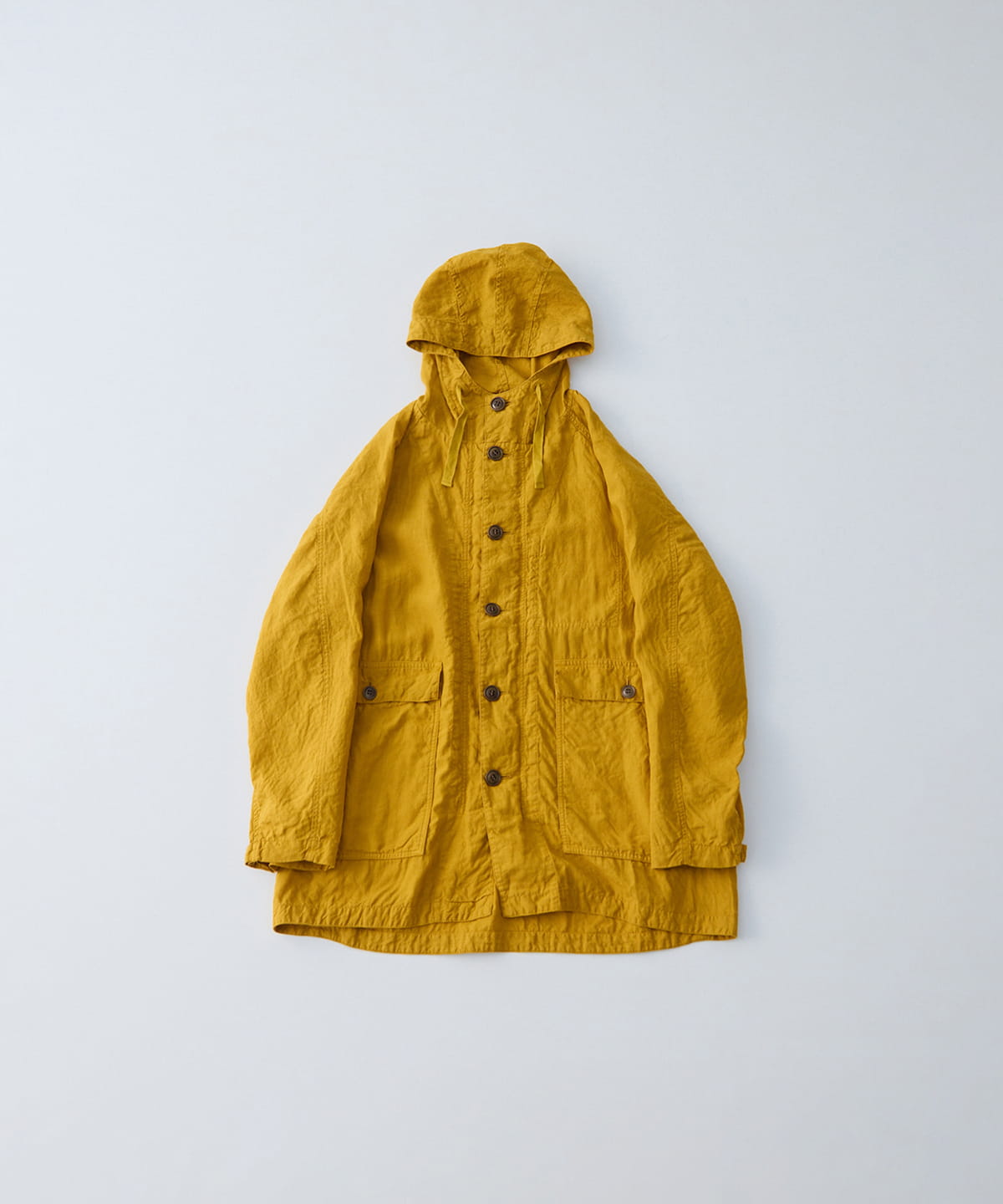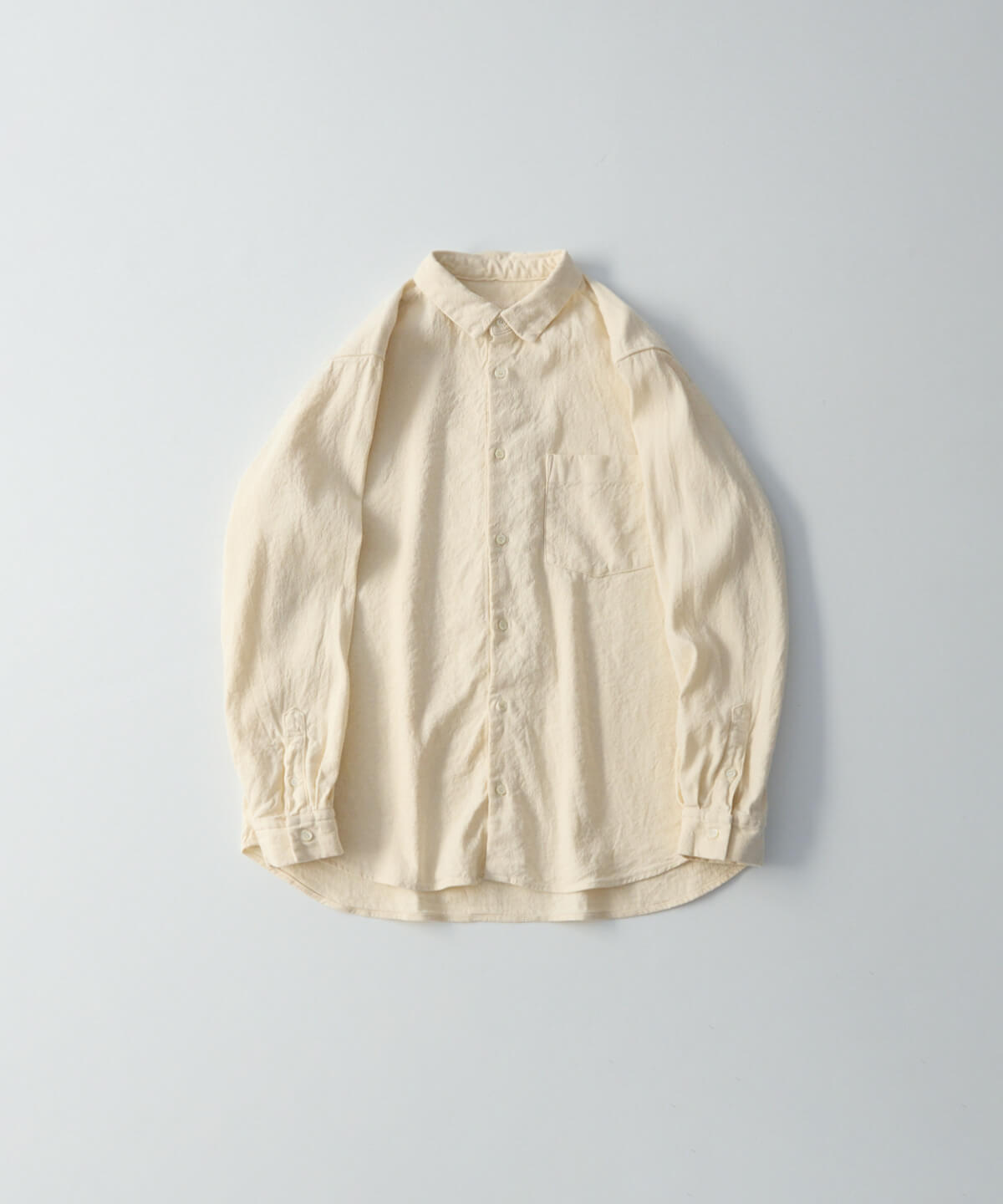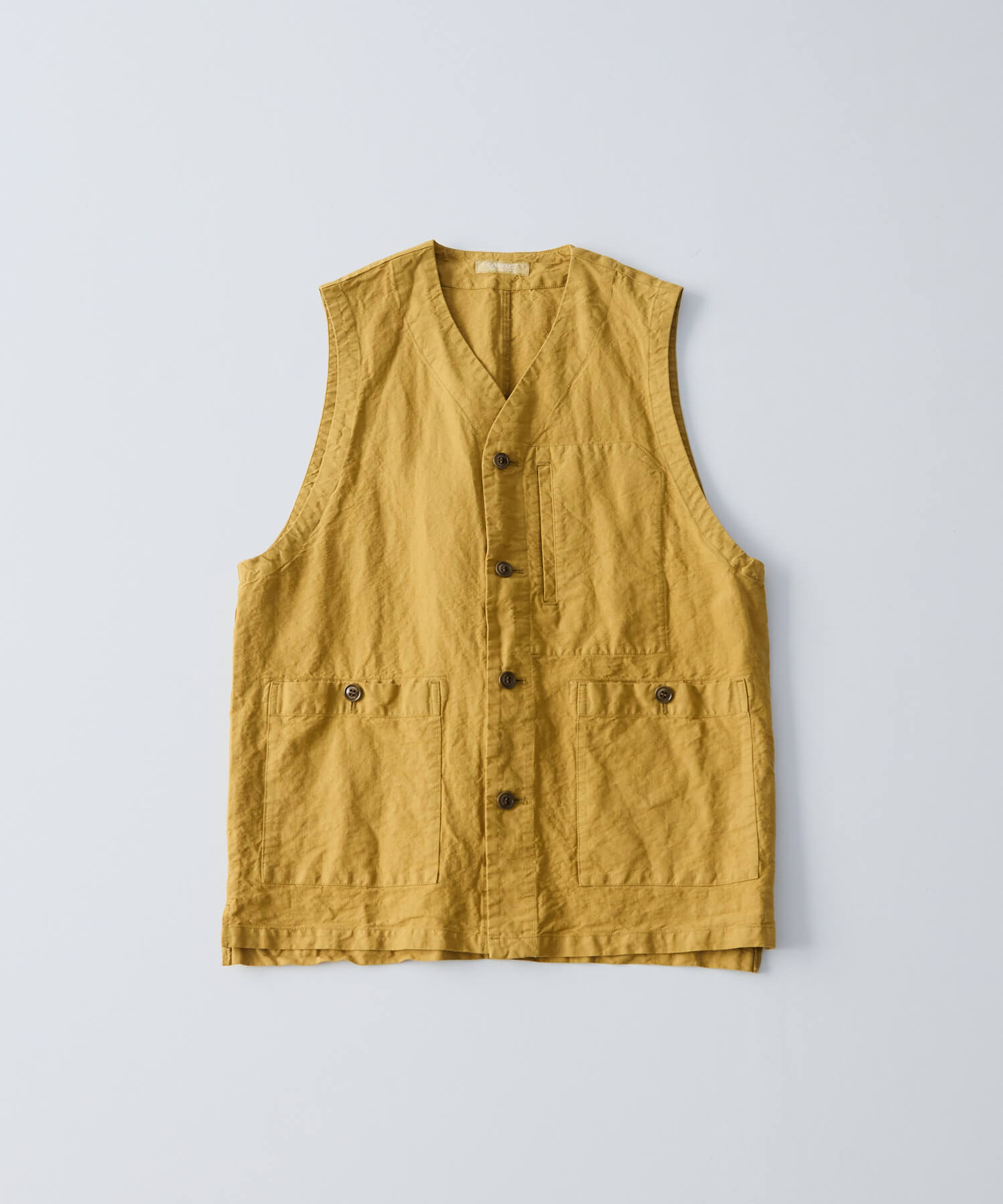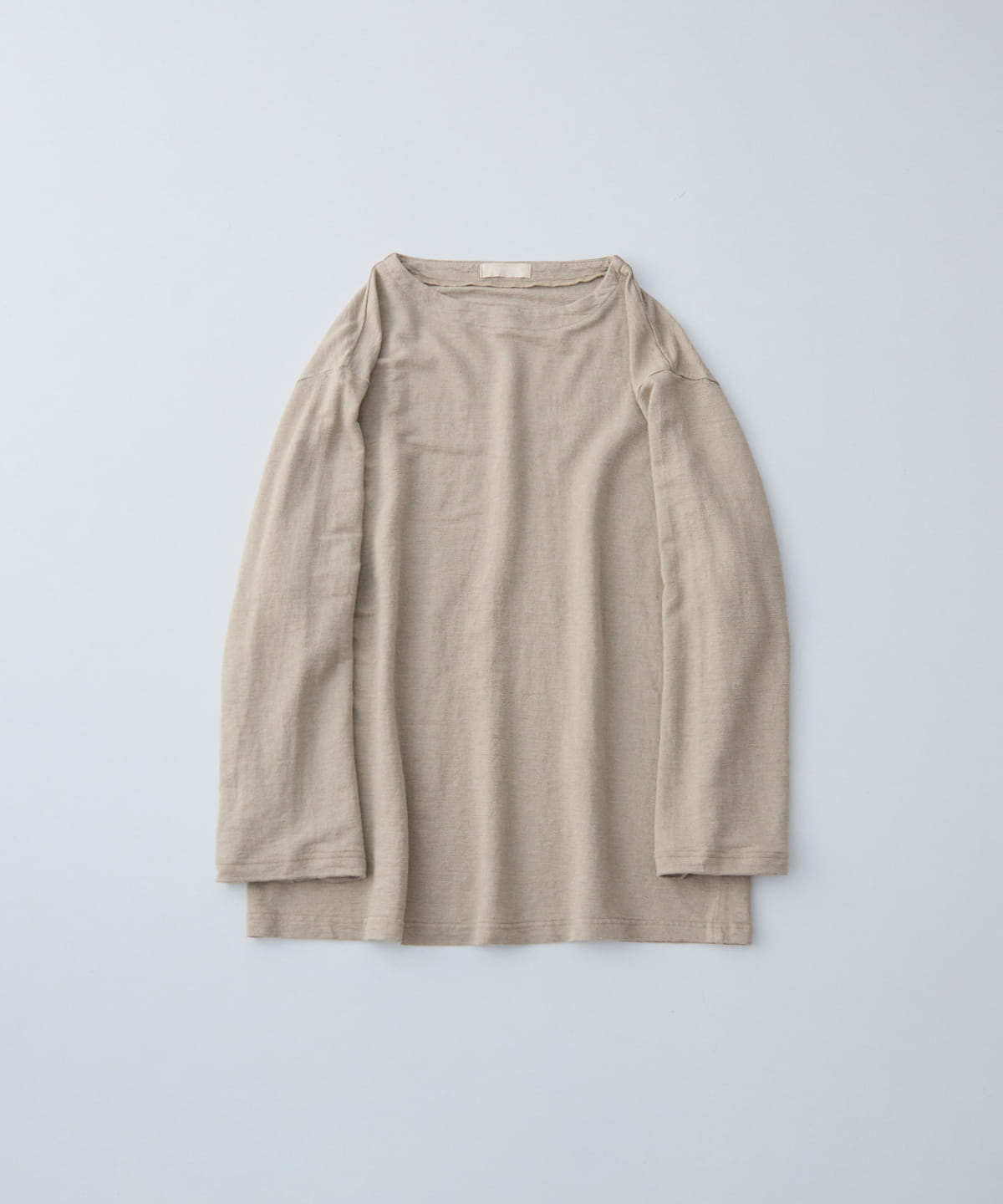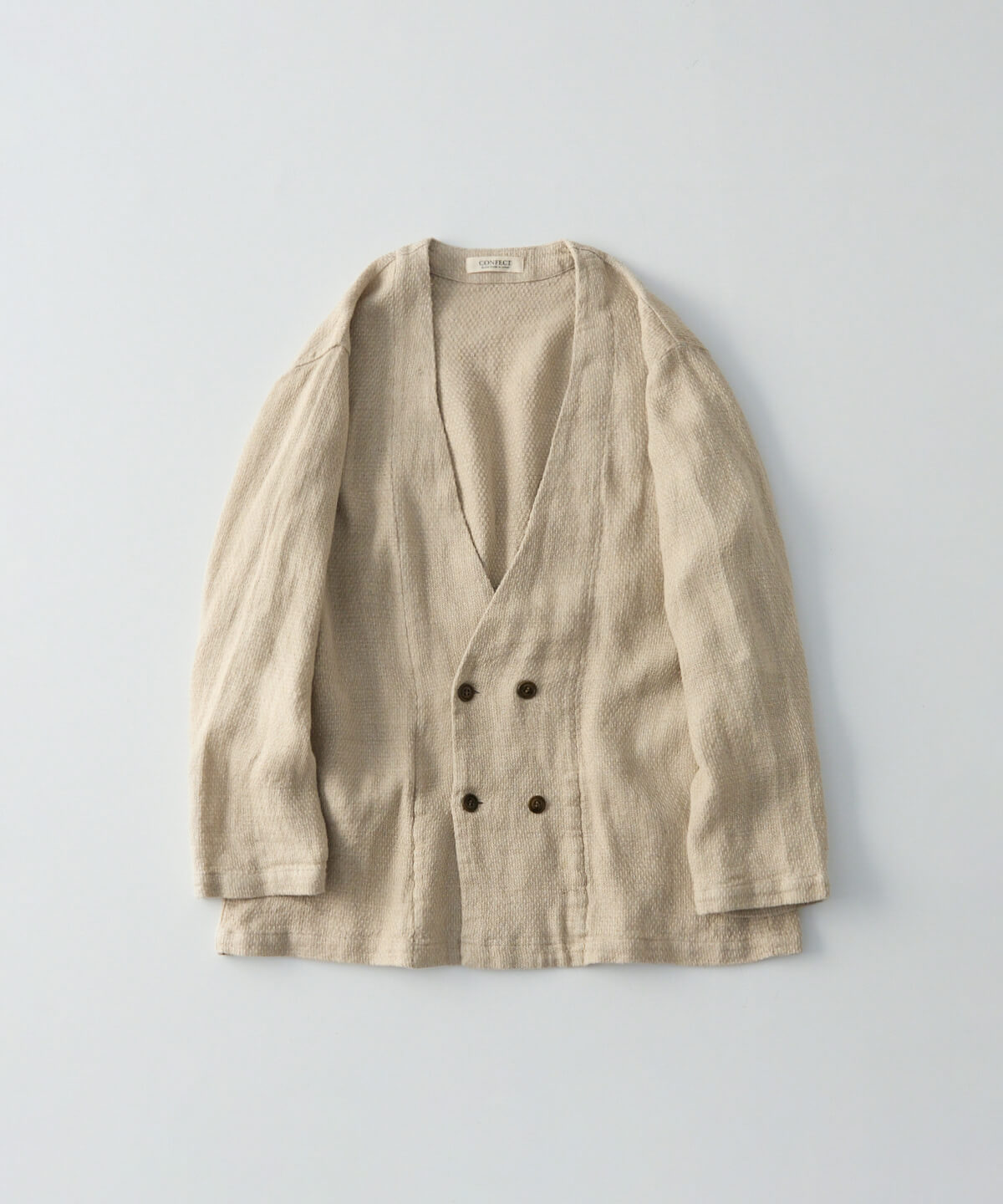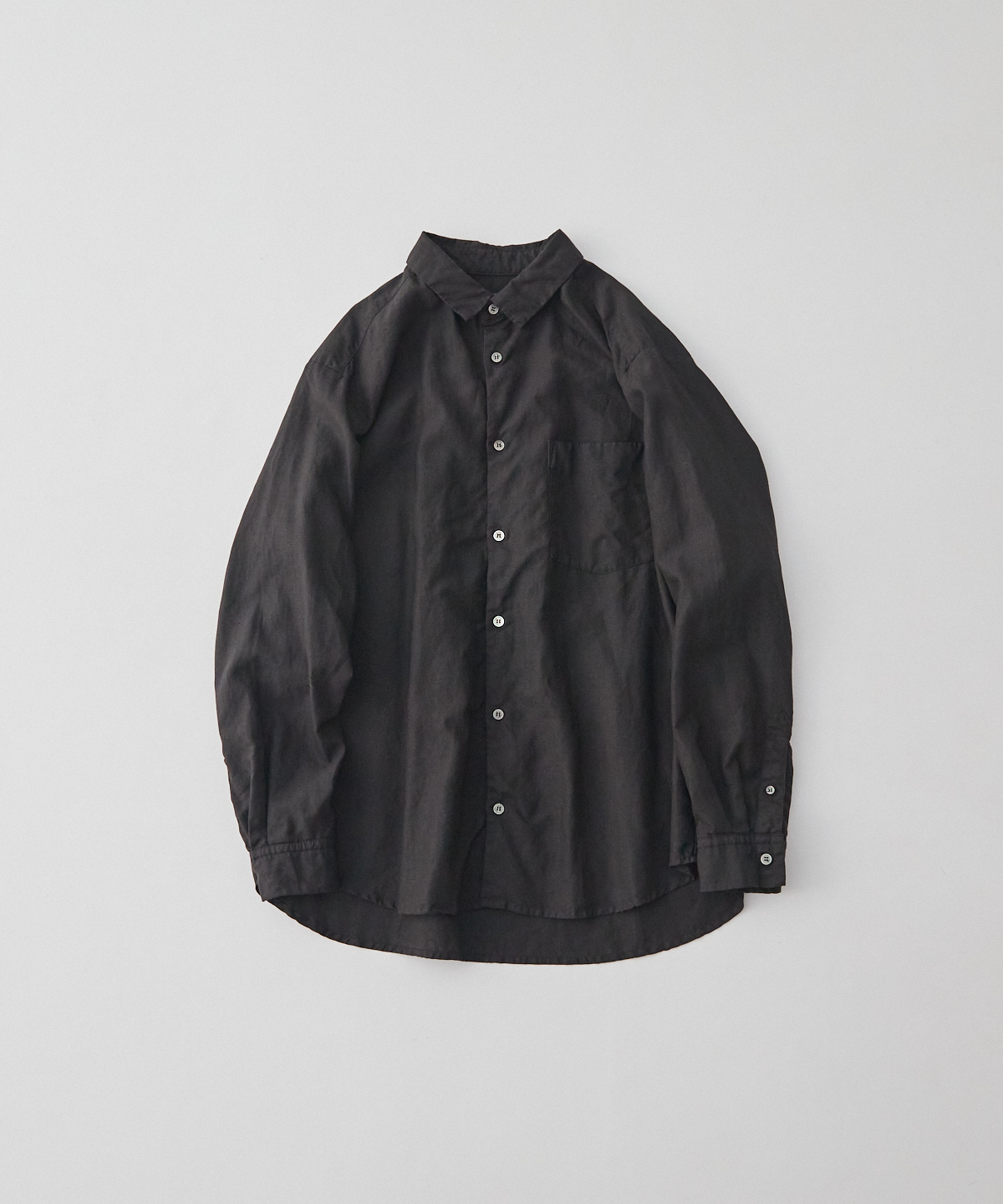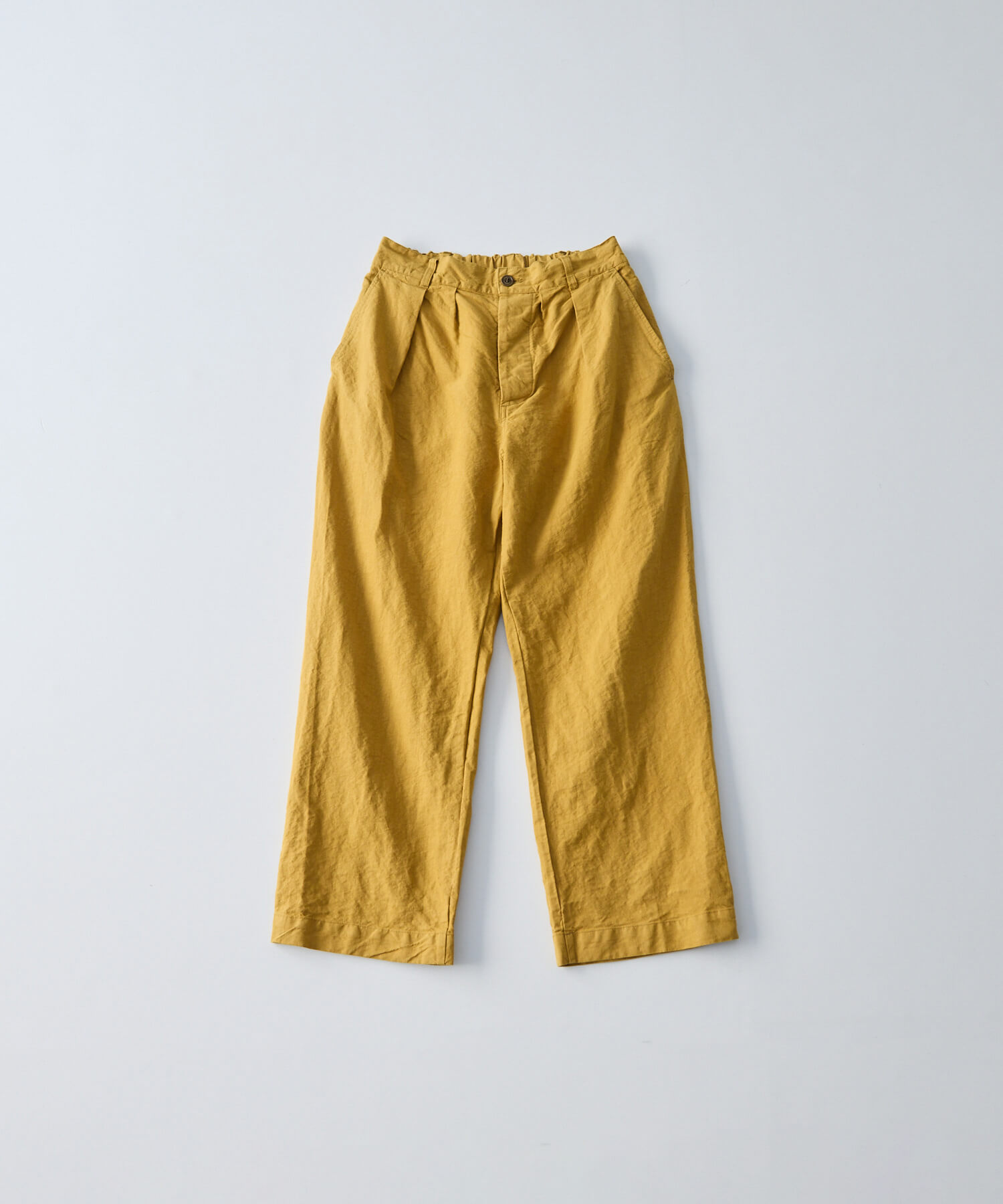URUSHI-DYE
At CONFECT, we have been continuing our “Ethical Dyed” initiative, which utilizes dyes made from discarded vegetables and natural materials for garment dyeing. For example, we have used onion skins, plum seeds, grapes left over from winemaking, and remnants of tea leaves. We have been captivated by the unique charm of the natural hues and textures that emerge when dyeing natural fibers with these extracted dyes.
For the 2025 season, we have turned our focus to lacquer dyeing. Rather than using the sap extracted from lacquer trees, we have crushed the trees themselves into chips to be used as dye.
The relationship between lacquer trees and Japan is deeply rooted in history, dating back to the Jomon period. Even today, domestically sourced lacquer is widely used in traditional Japanese crafts such as lacquerware, as well as in the restoration of important cultural properties and architectural structures.
One of the major challenges surrounding lacquer trees is finding ways to utilize the wood after the sap has been extracted. Unfortunately, even today, these trees are often cut down and left in the forest with no further use. Due to the risk of causing skin irritation upon contact, lacquer wood has long been considered to have little practical value.
In this process, we focused on the possibility of repurposing lacquer wood as a dye once its irritant components had dissipated. Through trial and error, we discovered that the color extracted from lacquer wood chips produces a beautifully rich mustard yellow. This season, we are excited to release five items featuring this unique “lacquer dyeing” technique.
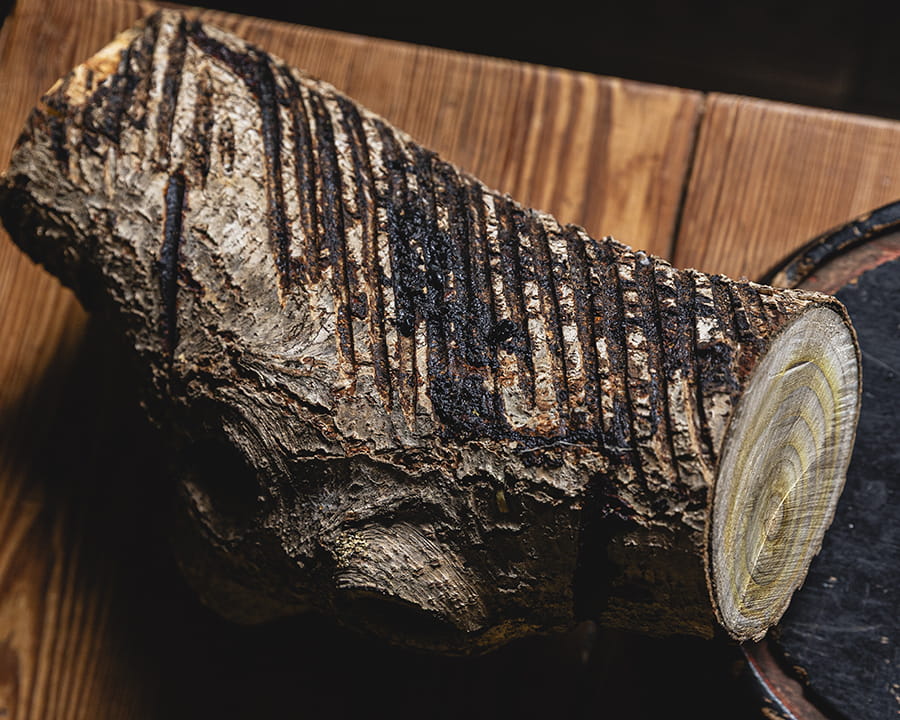
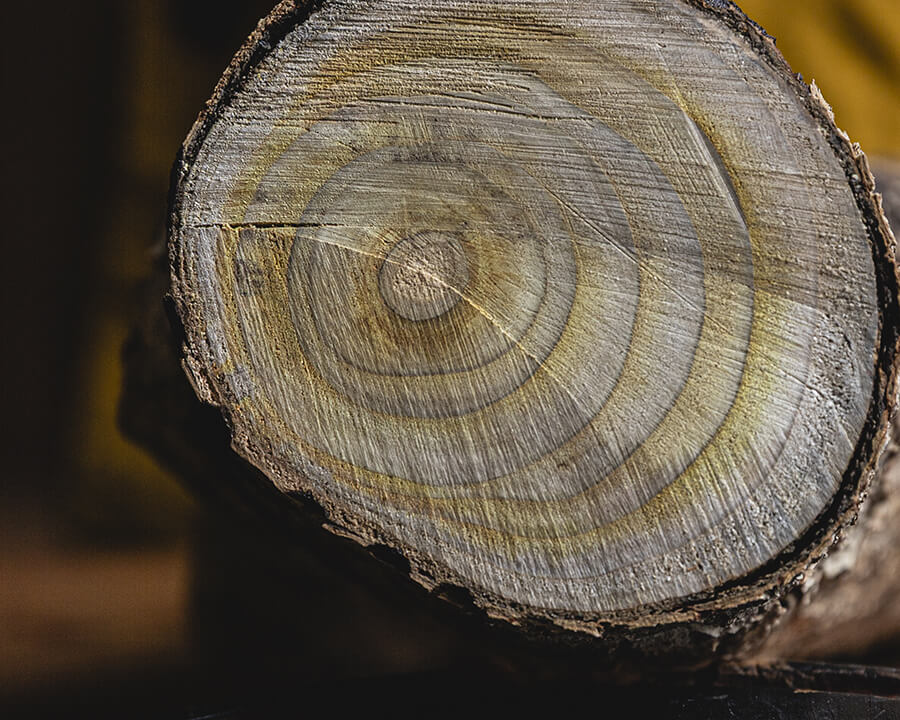
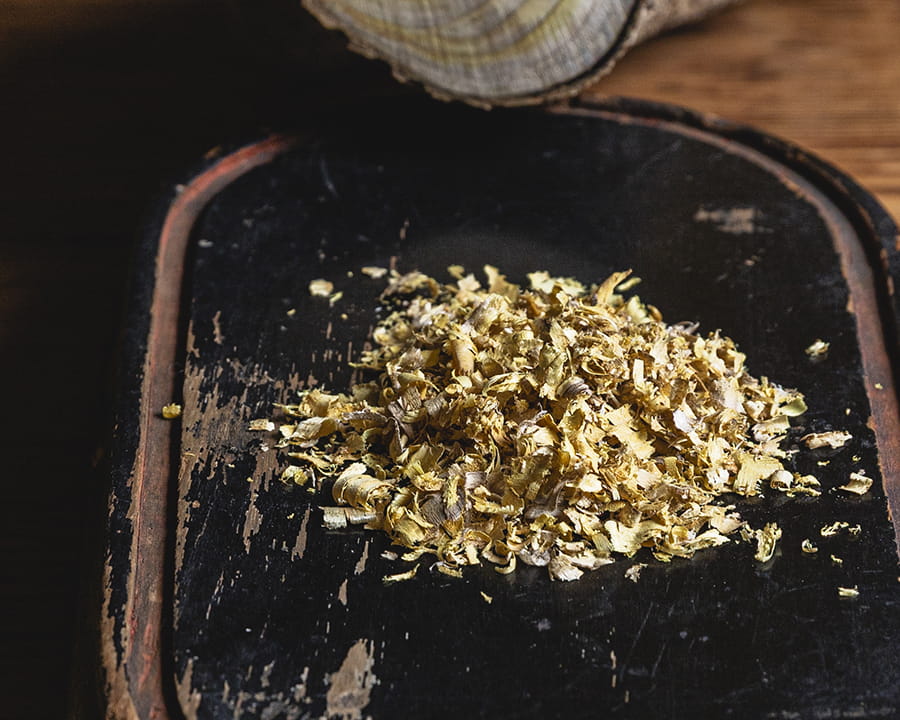
The cuts on the surface of the wood were made to extract sap from the lacquer tree. Looking at the cross-section of the lacquer wood, you can see a yellowish tint seeping along the growth rings. When crushed into chips, the wood takes on a beautiful mustard yellow color. By boiling these chips, we created the base for our dye. When using this dye on 100% linen fabric and linen-washi fabric, the resulting color varies depending on the characteristics of the material, the yarn count, and the fabric density. This variation in dye absorption has also captivated us.
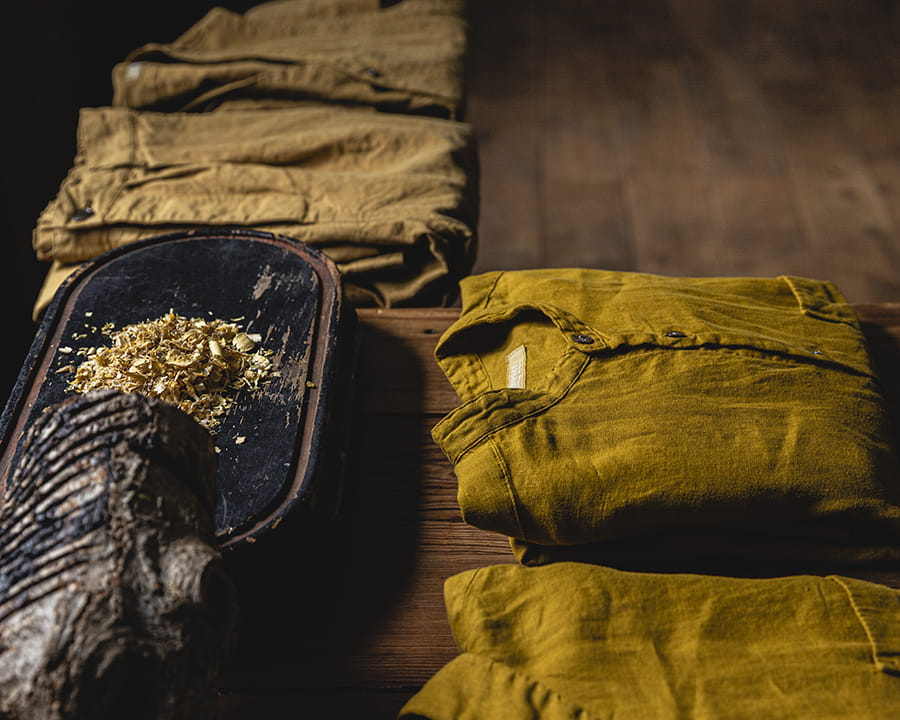

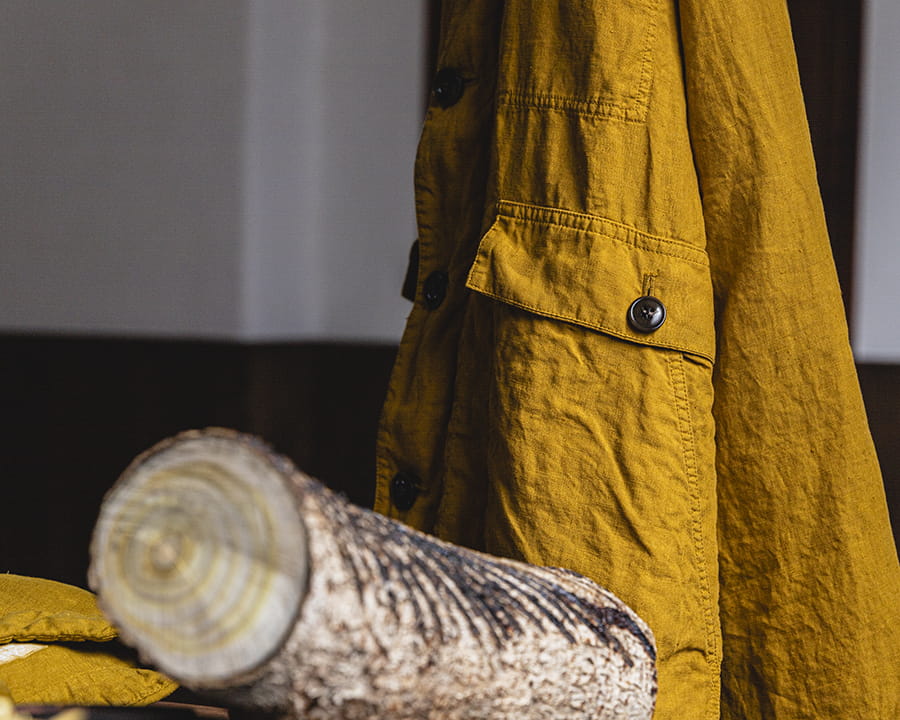
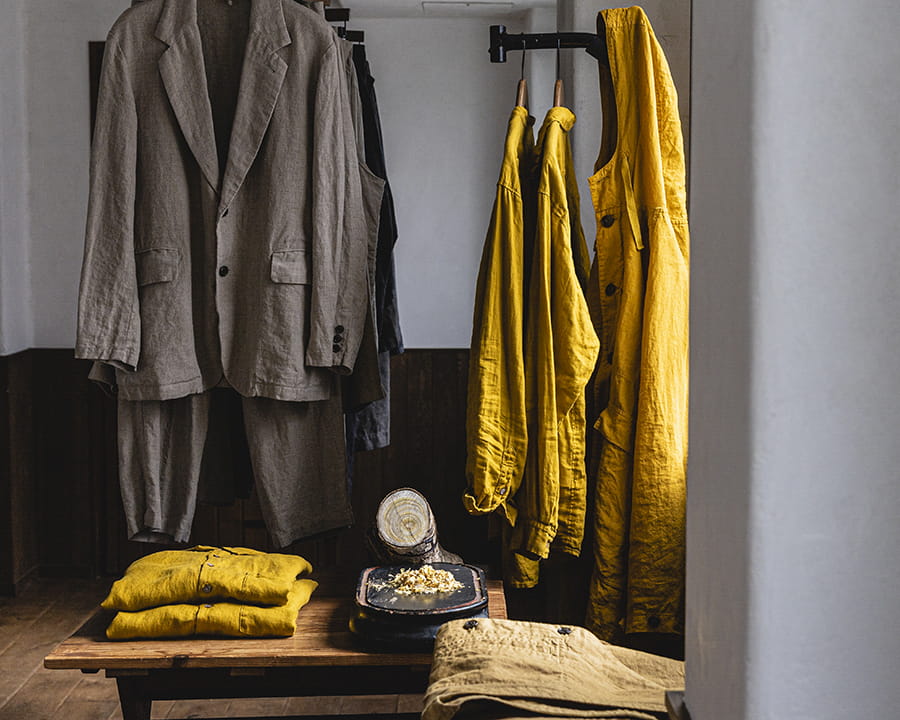
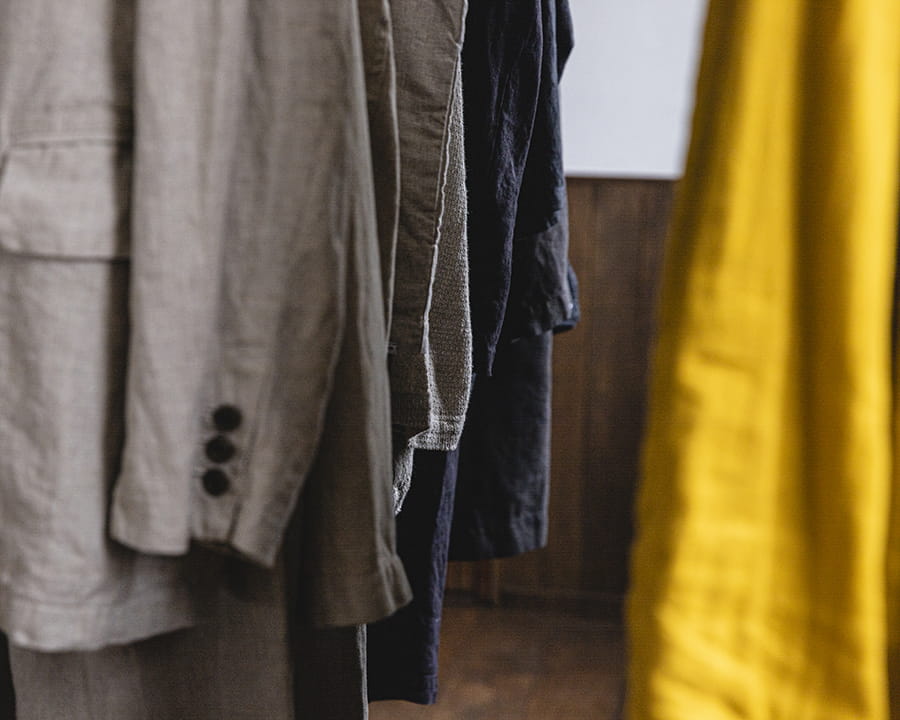
> Super Water-Repellent High Count Linen Parka in Urushi-Dye
> Urushi-Dyed Linen Lightweight Regular Collar Shirt
> Urushi-Dyed Linen Lightweight Band Collar Shirt
> Urushi-Dyed Washi Linen Gardener Vest
> Urushi-Dyed Washi Linen Work Pants
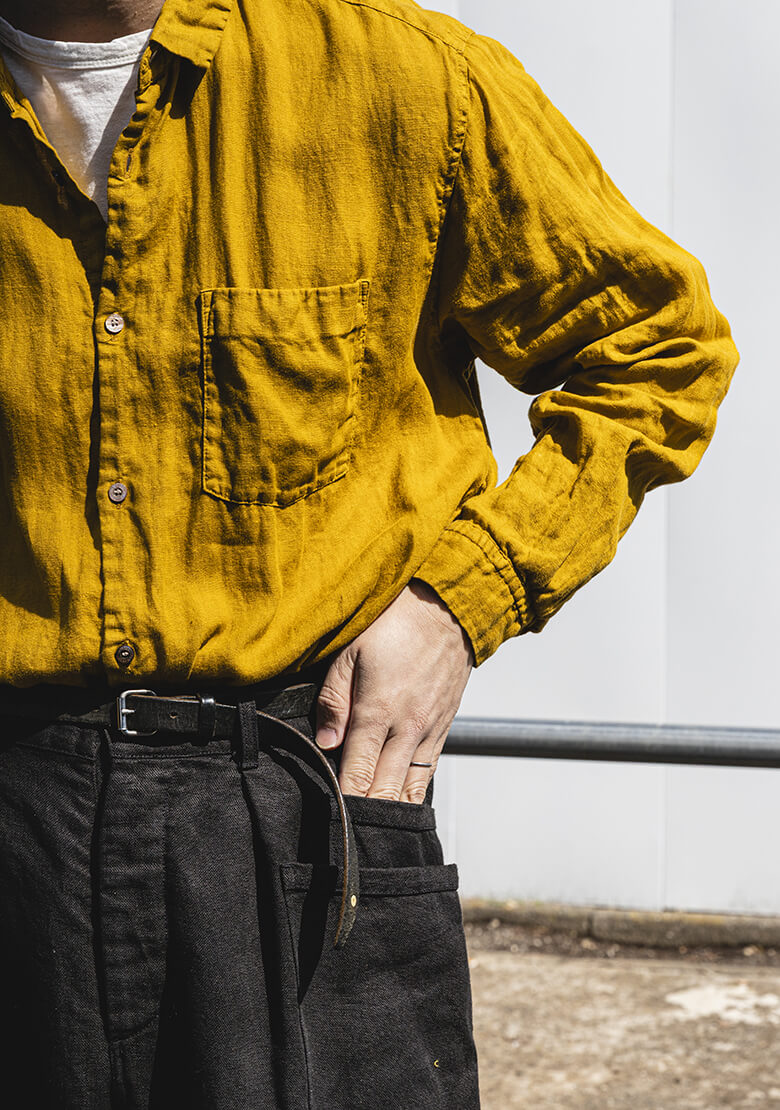


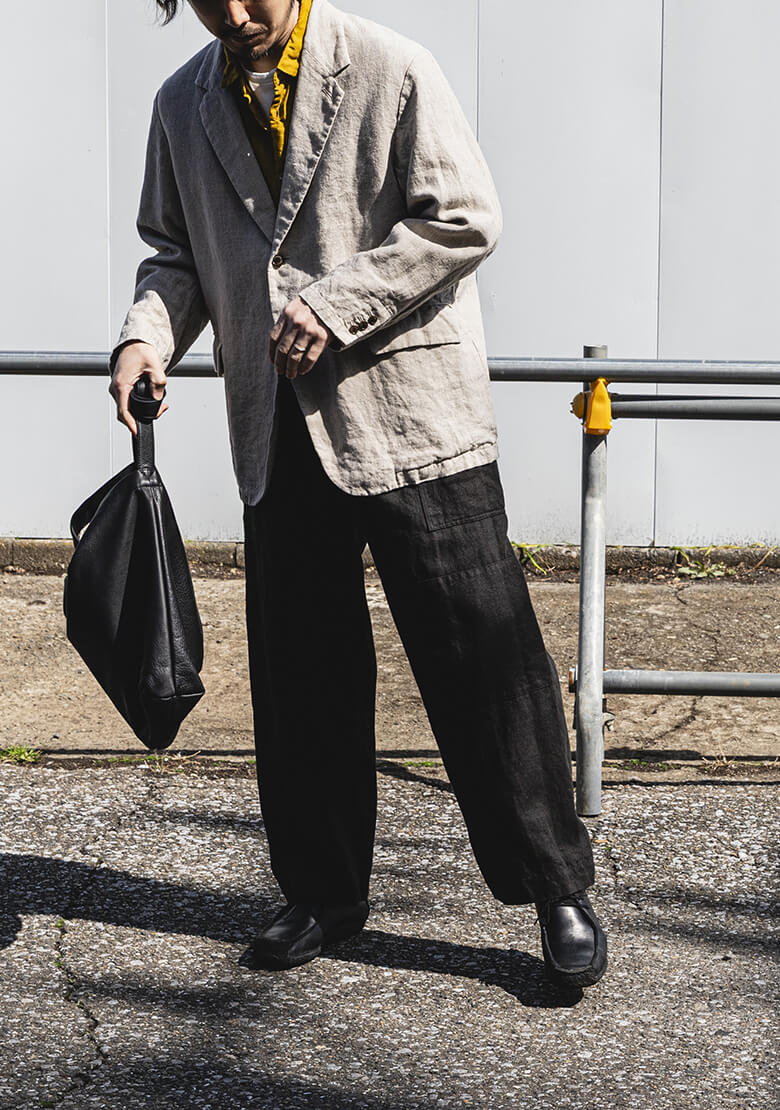

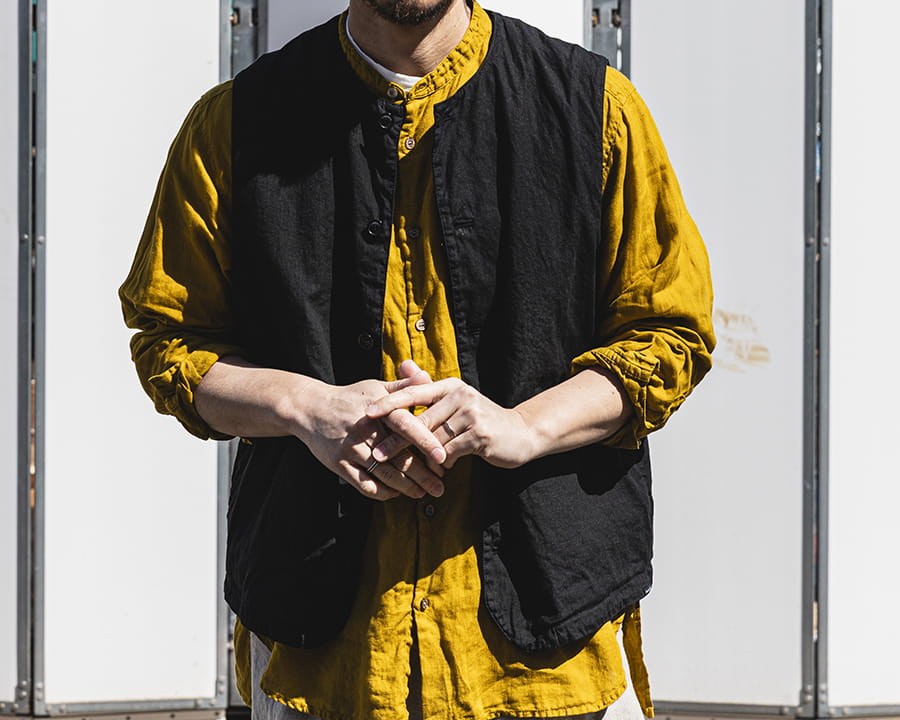
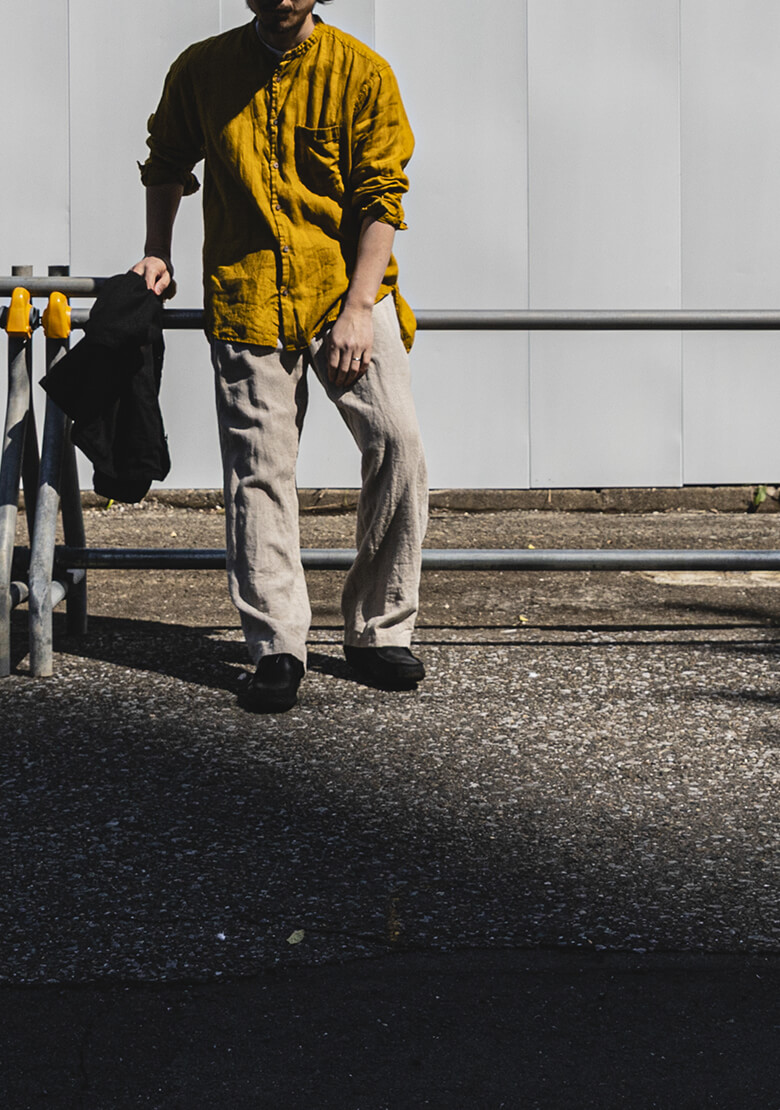
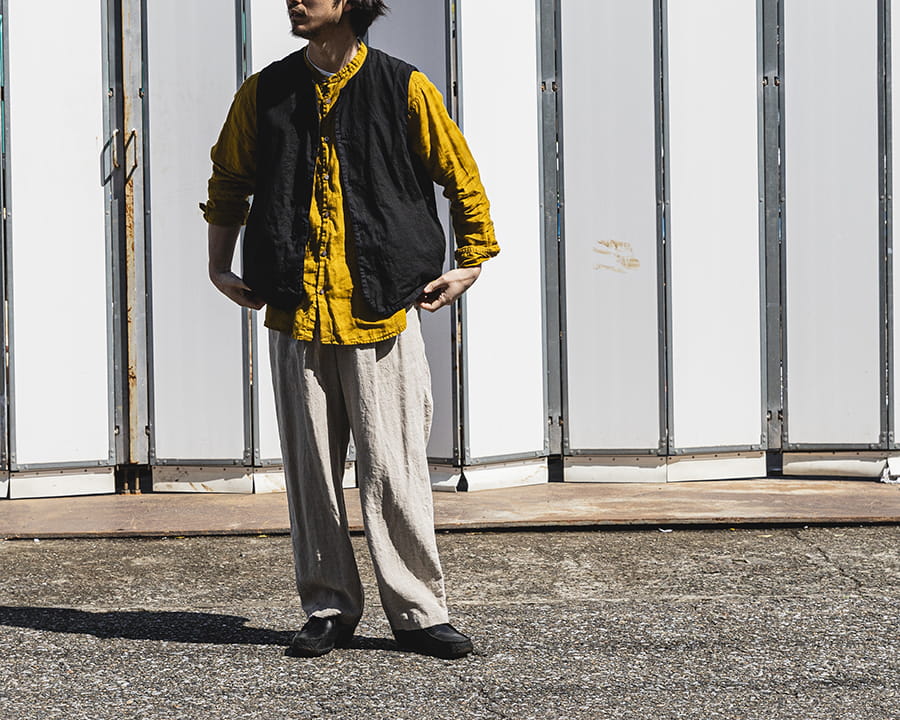
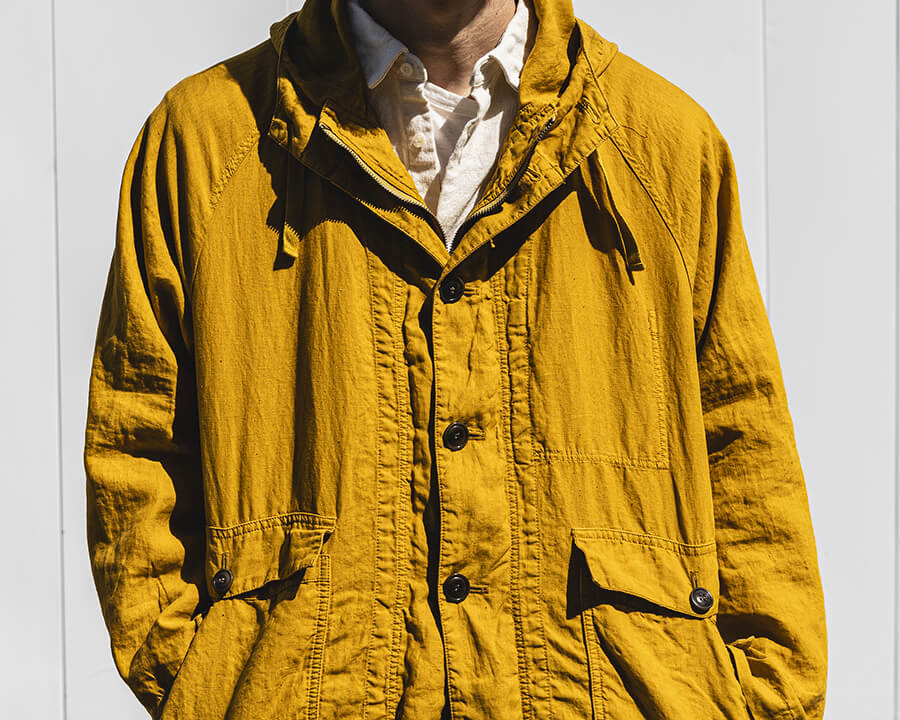
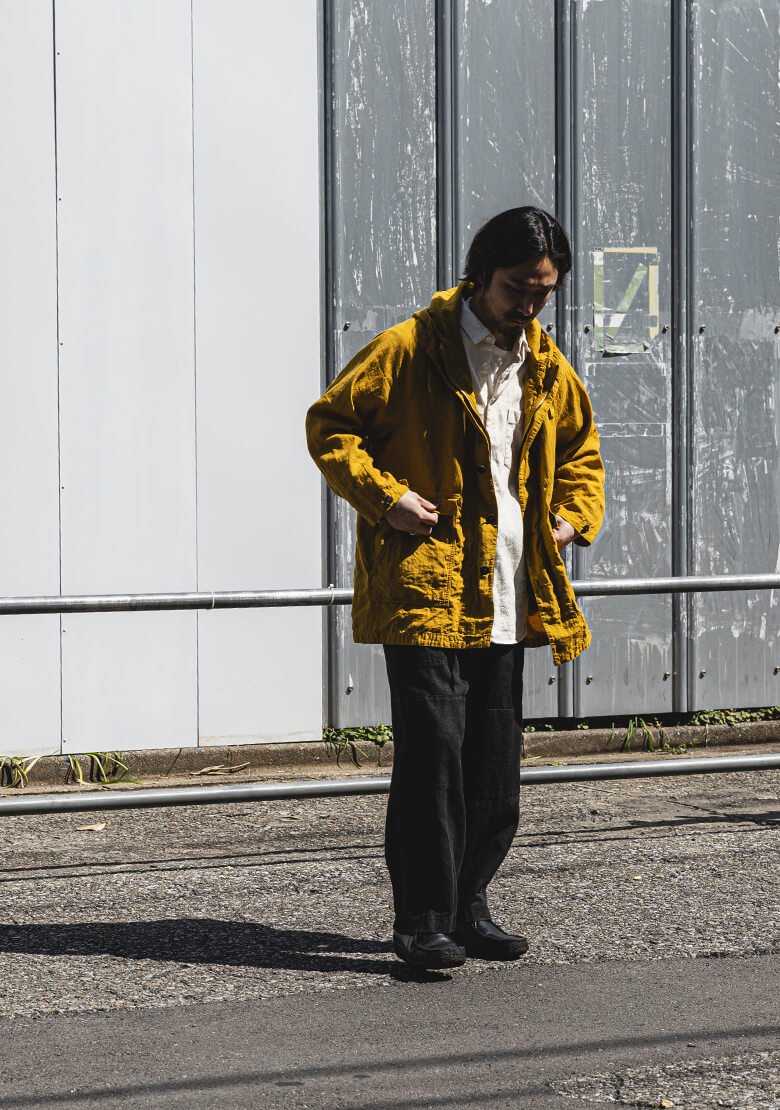
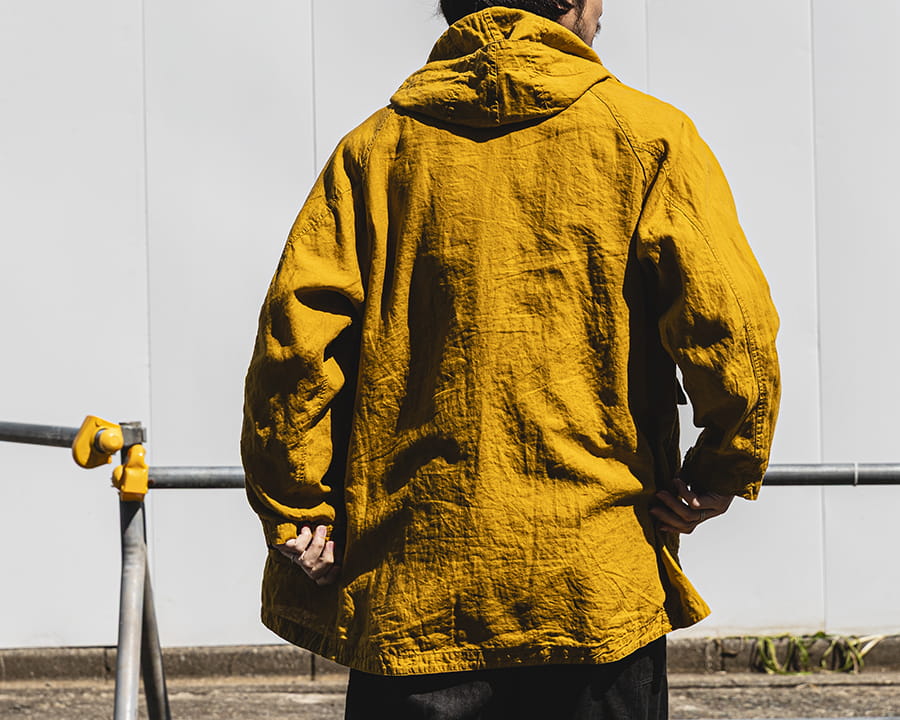
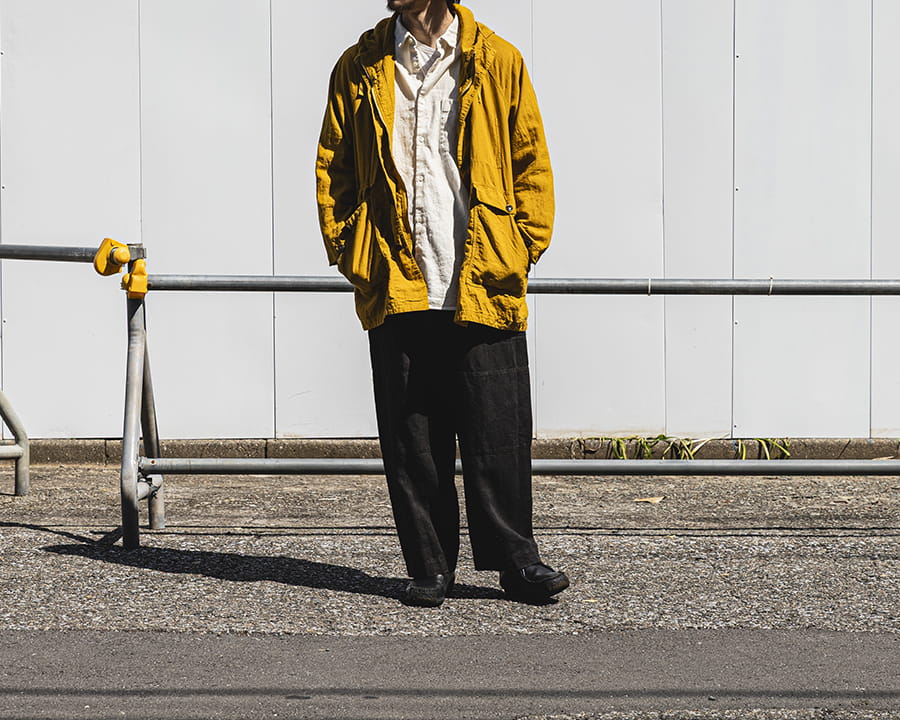
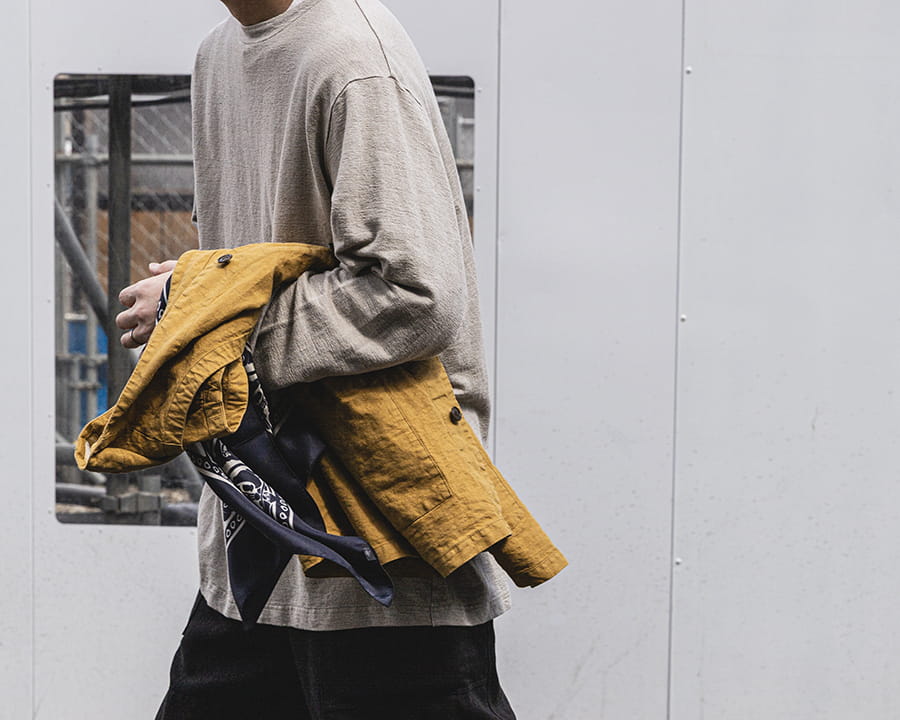
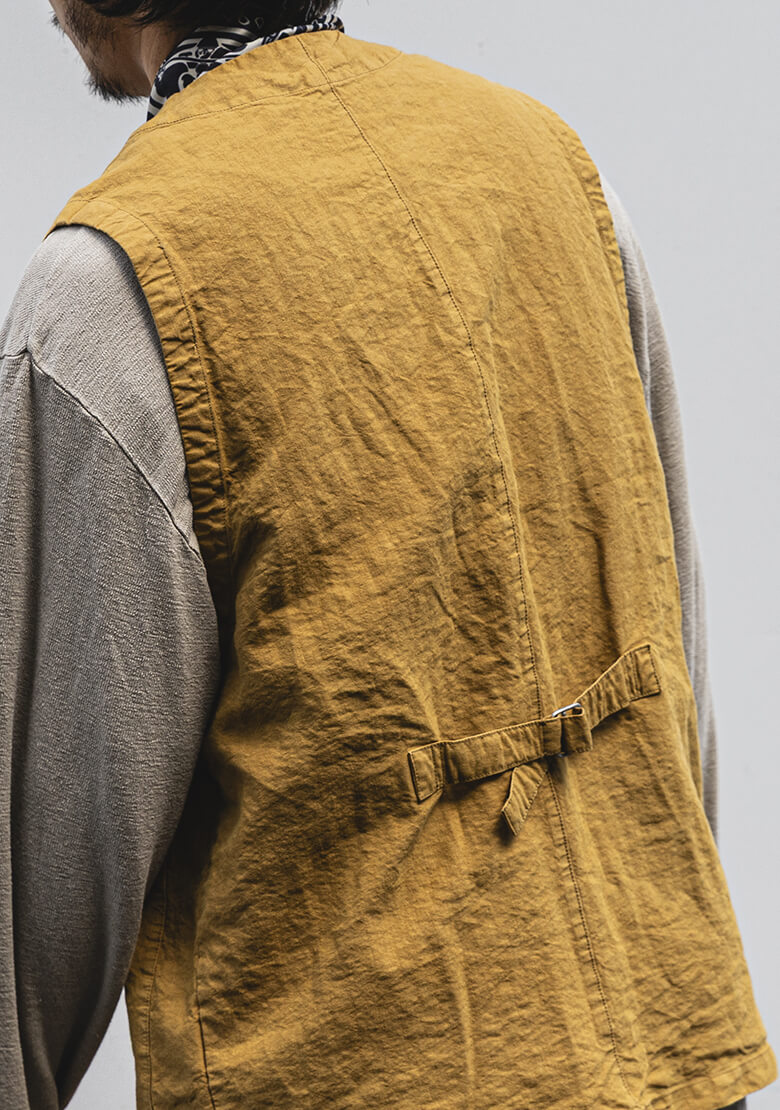
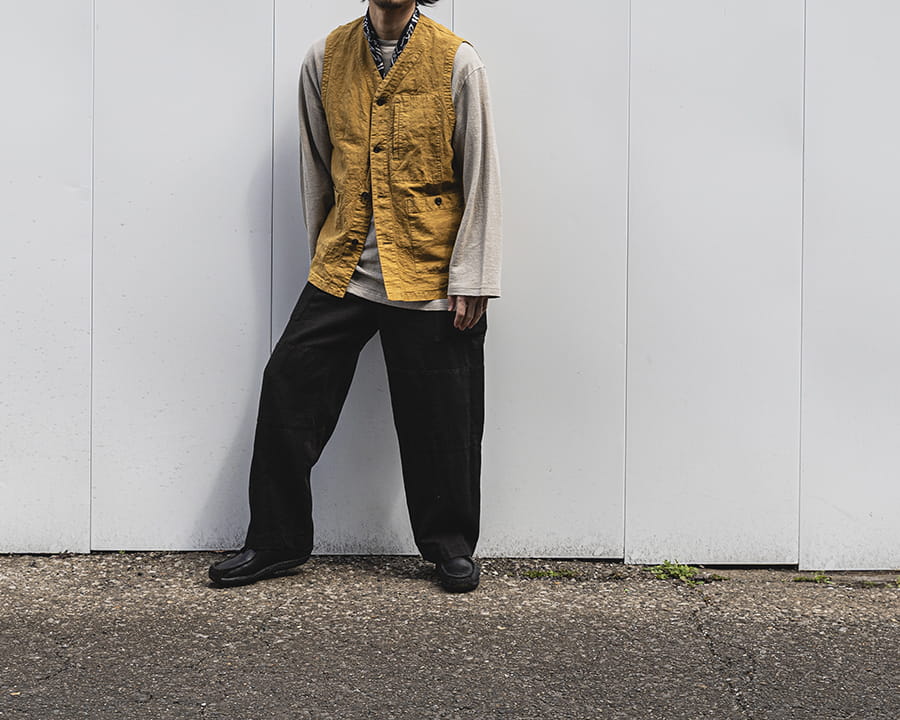
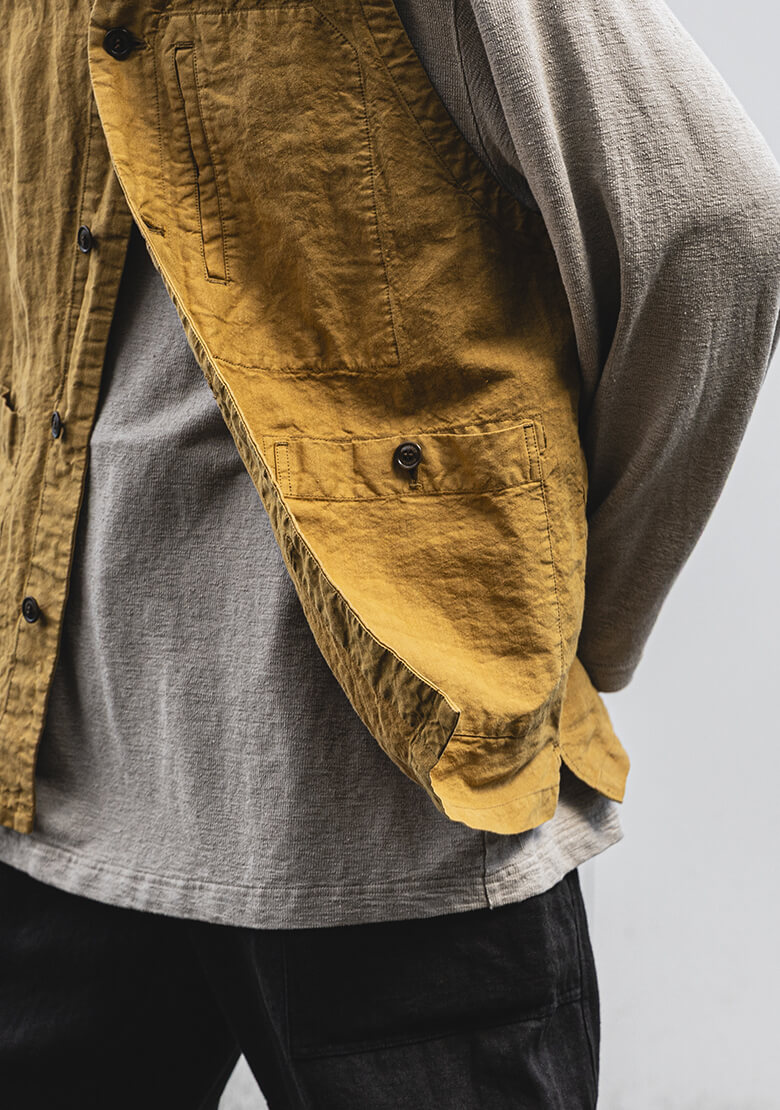
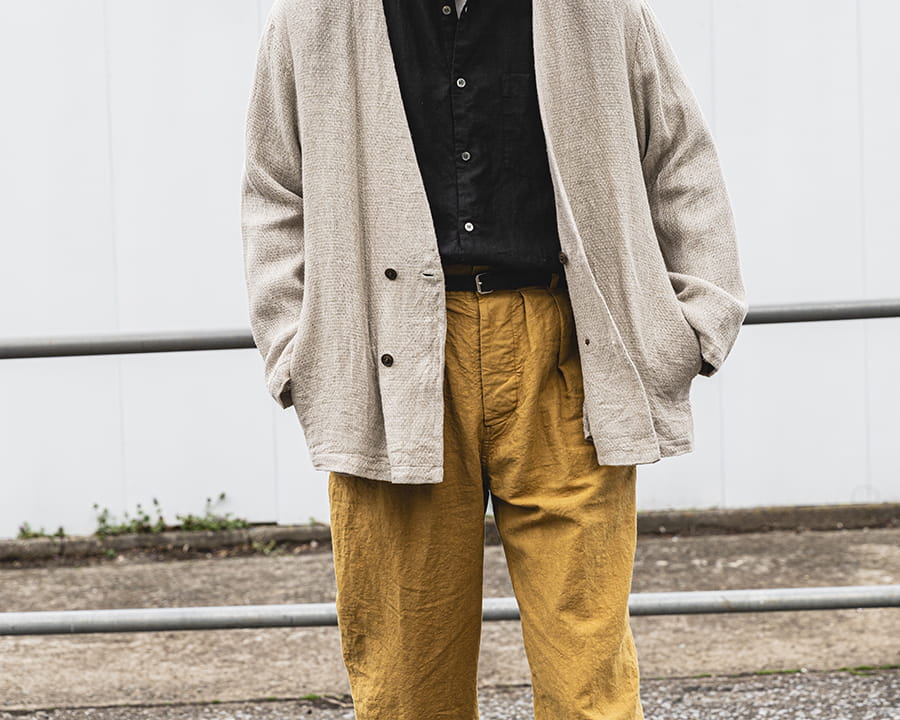
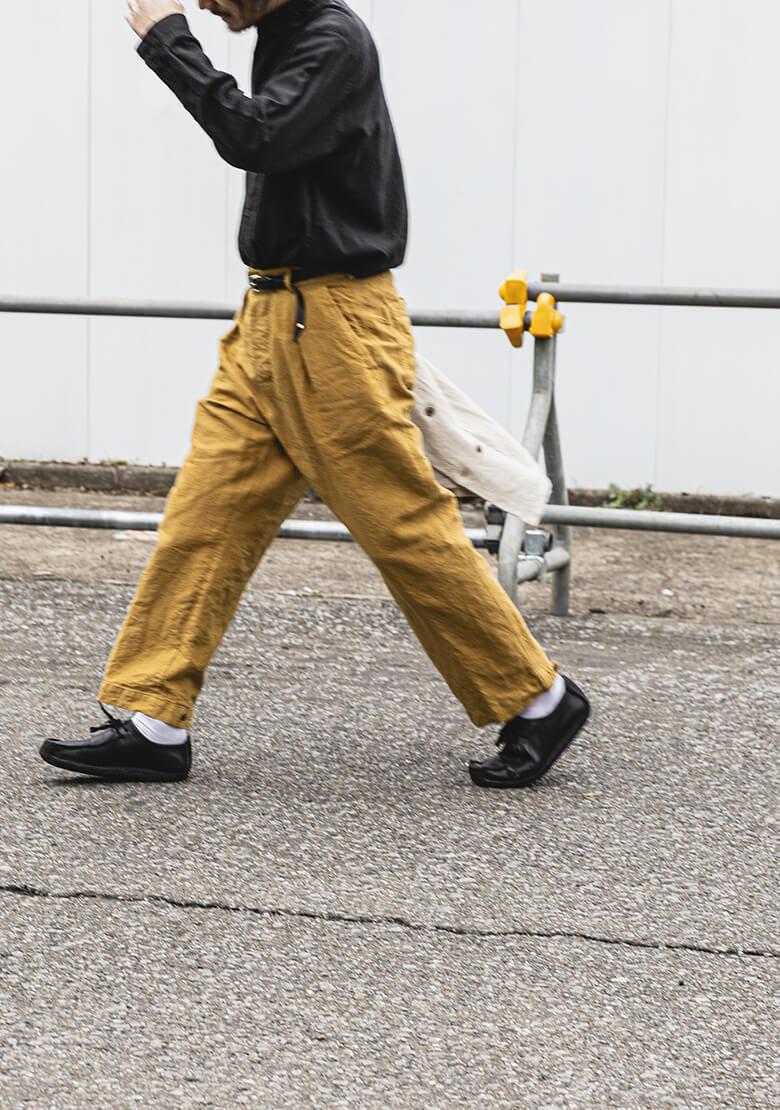
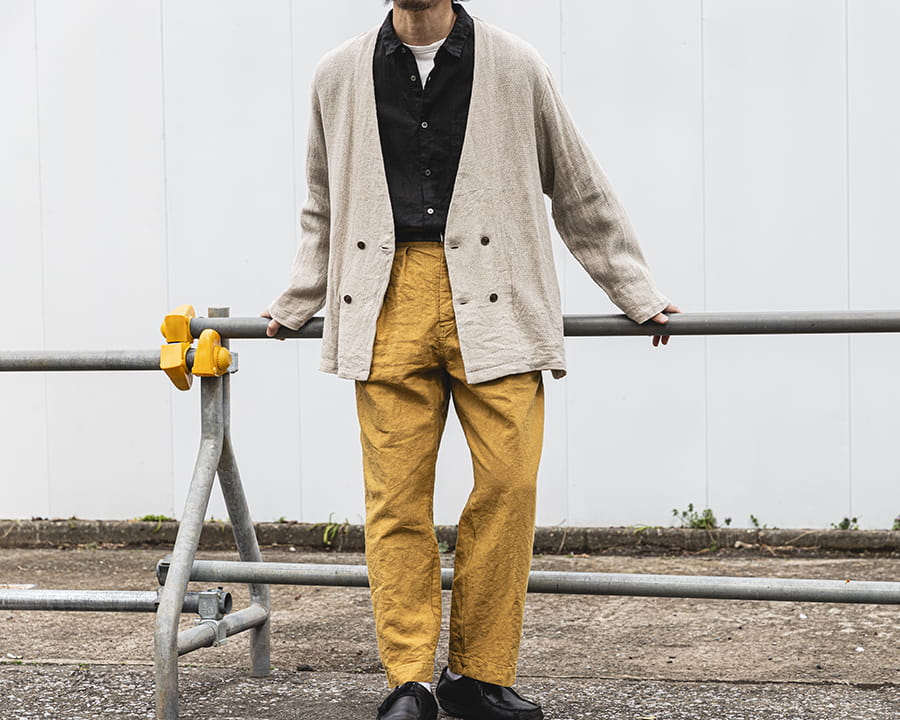
【Product Introduction】

【2025 Spring Summer Collection Movie】

Available for worldwide shipping at our International Online Store
-Super Water-Repellent High Count Linen Parka in Urushi-Dye
-Urushi-Dyed Linen Lightweight Regular Collar Shirt
-Urushi-Dyed Linen Lightweight Band Collar Shirt
-Urushi-Dyed Washi Linen Gardener Vest
-Urushi-Dyed Washi Linen Work Pants
廃棄していくものを利活用した
染色・エシカルダイの探究から生まれた「ウルシ染め」
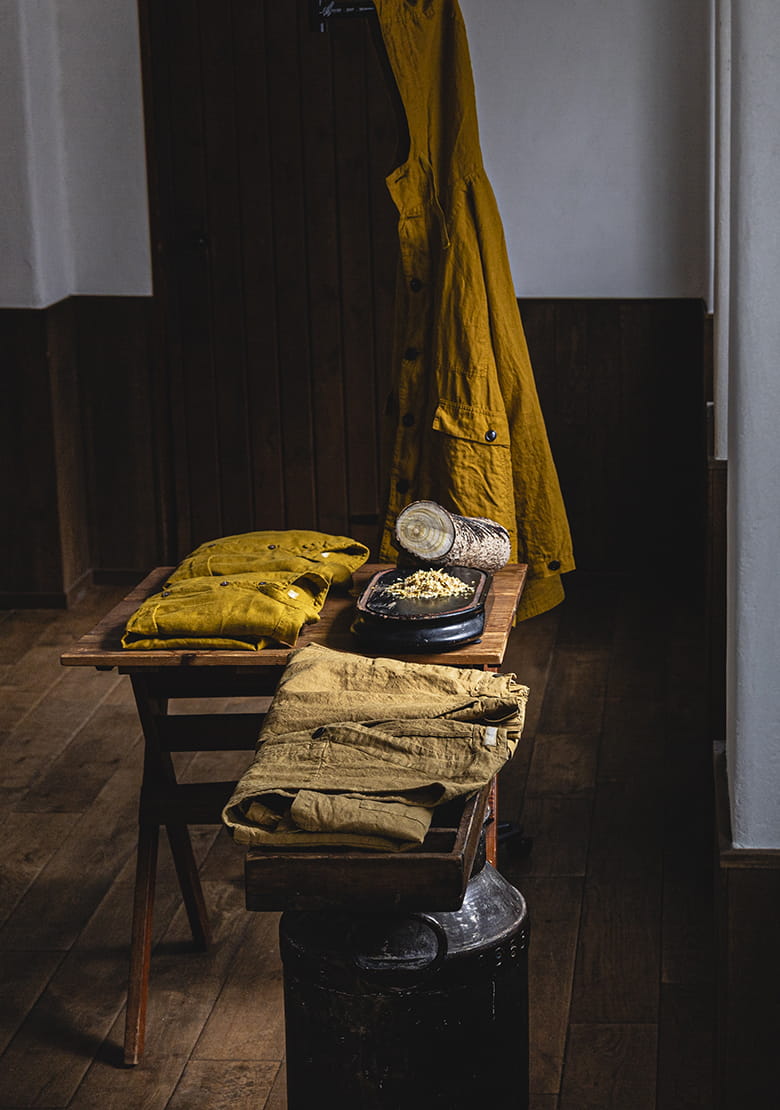
At CONFECT, we have been continuing our “Ethical Dyed” initiative, which utilizes dyes made from discarded vegetables and natural materials for garment dyeing. For example, we have used onion skins, plum seeds, grapes left over from winemaking, and remnants of tea leaves. We have been captivated by the unique charm of the natural hues and textures that emerge when dyeing natural fibers with these extracted dyes.
For the 2025 season, we have turned our focus to lacquer dyeing. Rather than using the sap extracted from lacquer trees, we have crushed the trees themselves into chips to be used as dye.
The relationship between lacquer trees and Japan is deeply rooted in history, dating back to the Jomon period. Even today, domestically sourced lacquer is widely used in traditional Japanese crafts such as lacquerware, as well as in the restoration of important cultural properties and architectural structures.
One of the major challenges surrounding lacquer trees is finding ways to utilize the wood after the sap has been extracted. Unfortunately, even today, these trees are often cut down and left in the forest with no further use. Due to the risk of causing skin irritation upon contact, lacquer wood has long been considered to have little practical value.
In this process, we focused on the possibility of repurposing lacquer wood as a dye once its irritant components had dissipated. Through trial and error, we discovered that the color extracted from lacquer wood chips produces a beautifully rich mustard yellow. This season, we are excited to release five items featuring this unique “lacquer dyeing” technique.
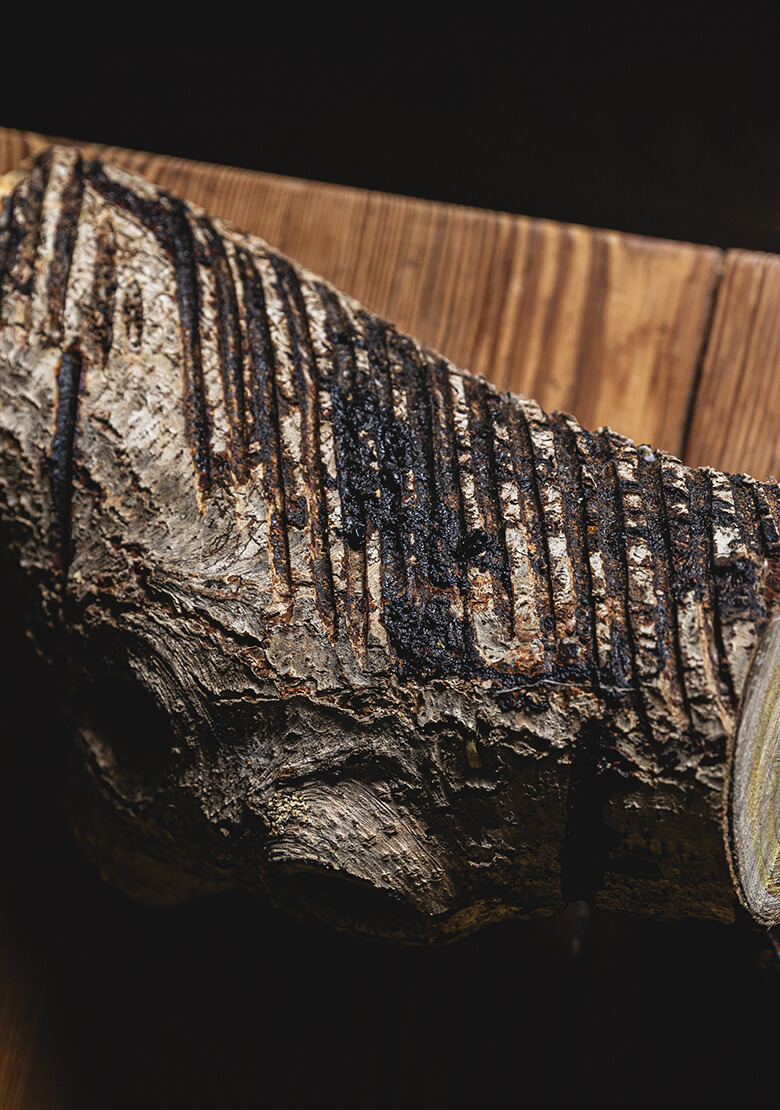
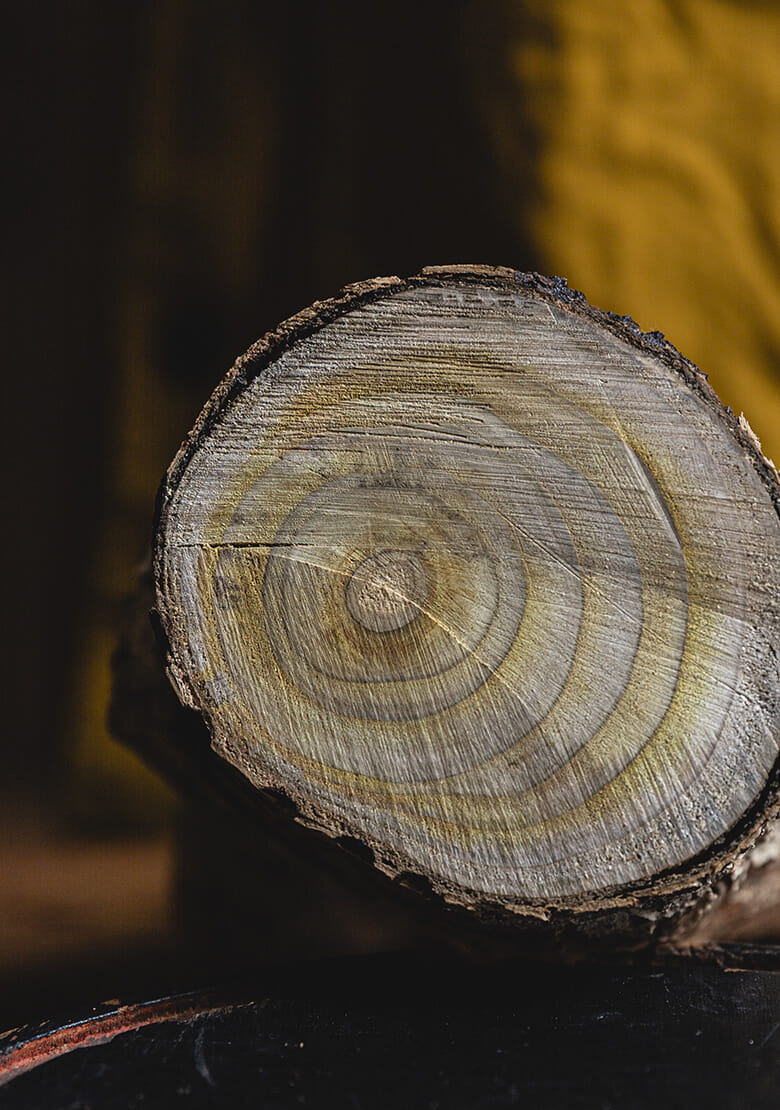
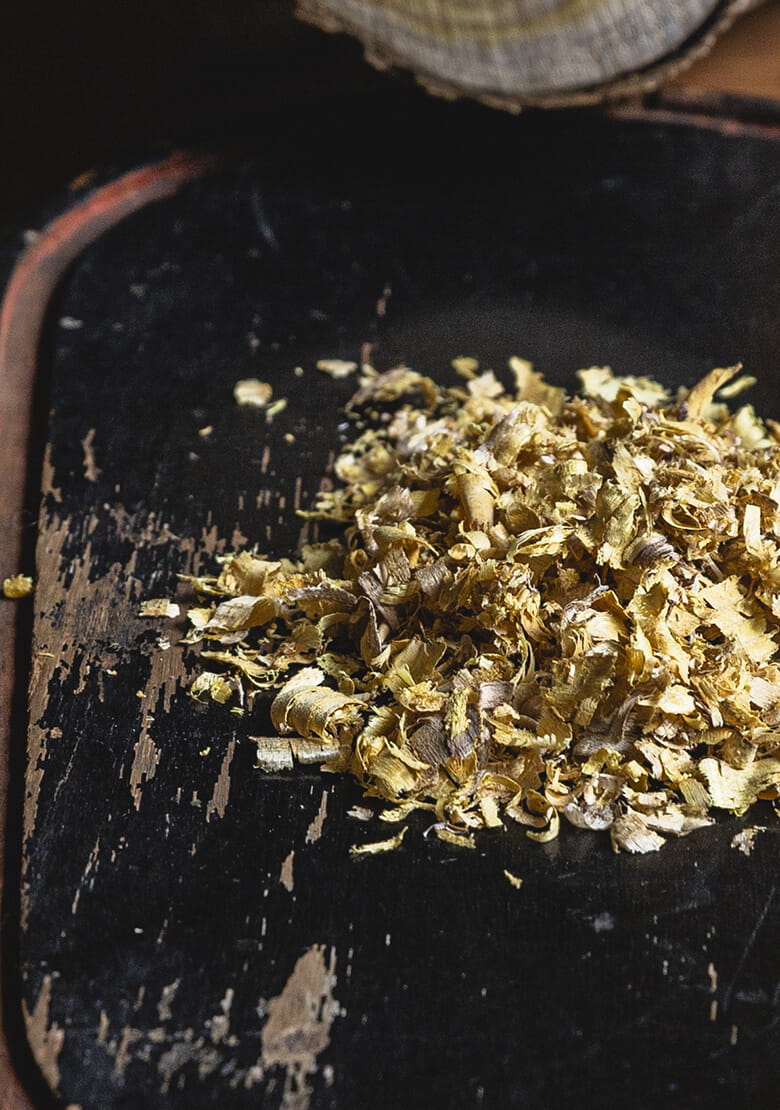
The cuts on the surface of the wood were made to extract sap from the lacquer tree. Looking at the cross-section of the lacquer wood, you can see a yellowish tint seeping along the growth rings. When crushed into chips, the wood takes on a beautiful mustard yellow color. By boiling these chips, we created the base for our dye. When using this dye on 100% linen fabric and linen-washi fabric, the resulting color varies depending on the characteristics of the material, the yarn count, and the fabric density. This variation in dye absorption has also captivated us.
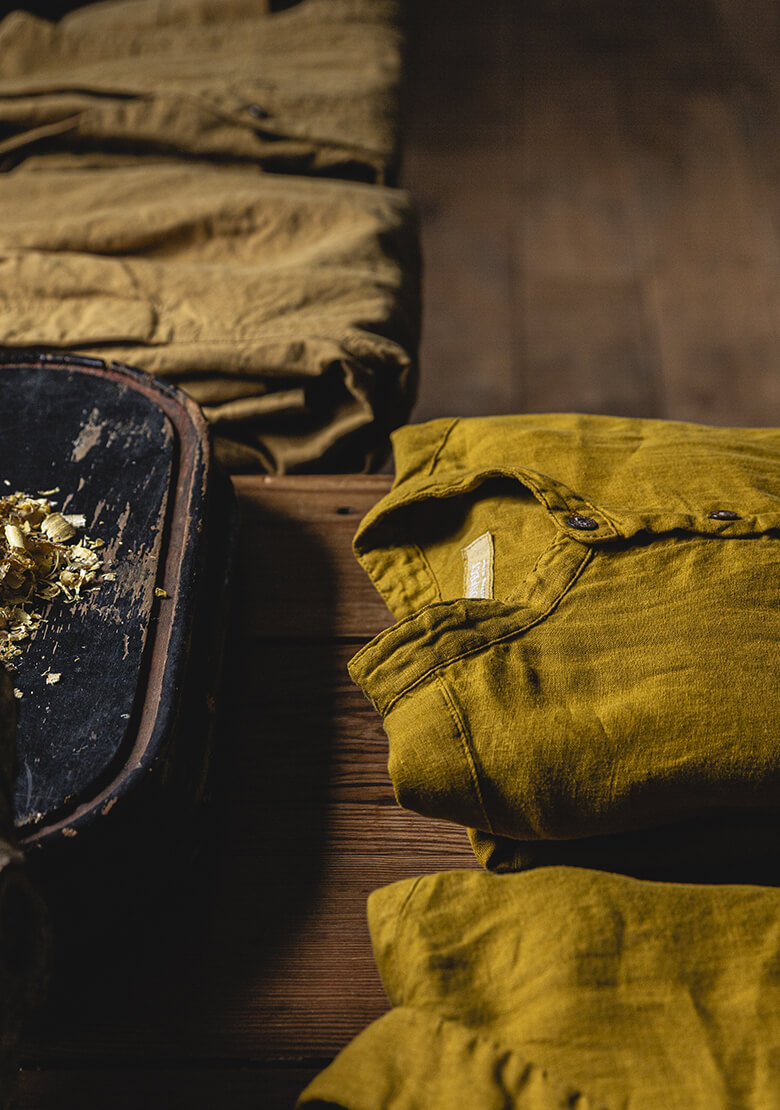
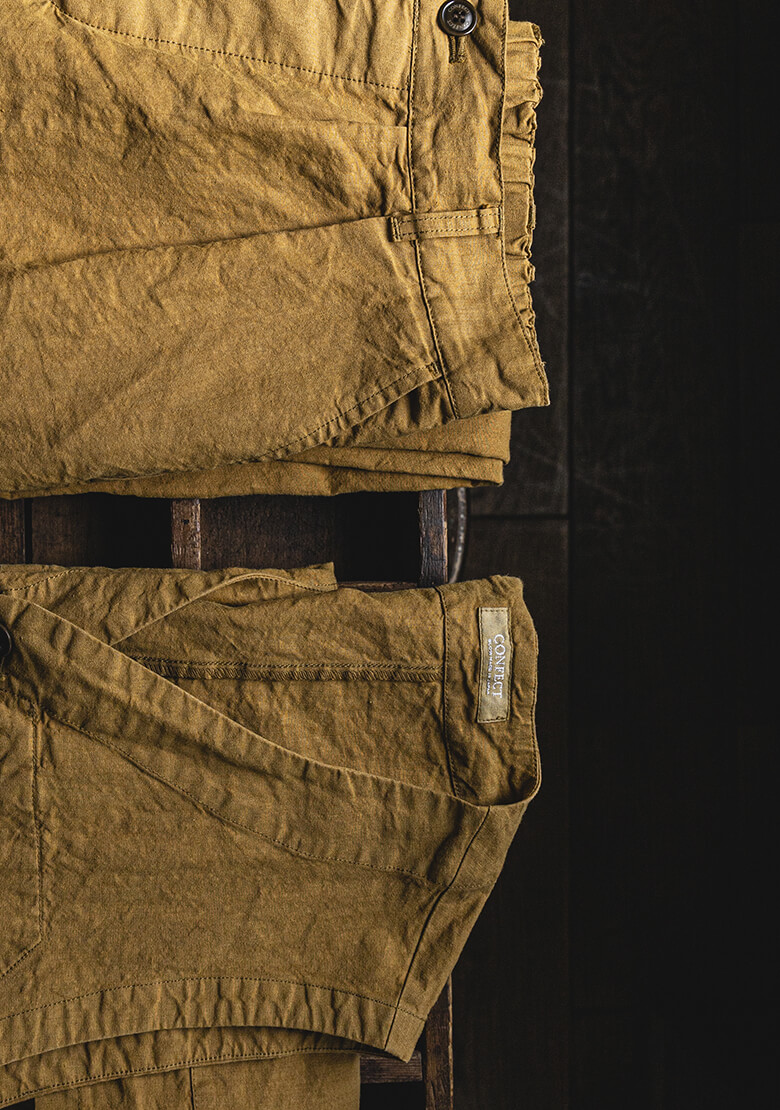
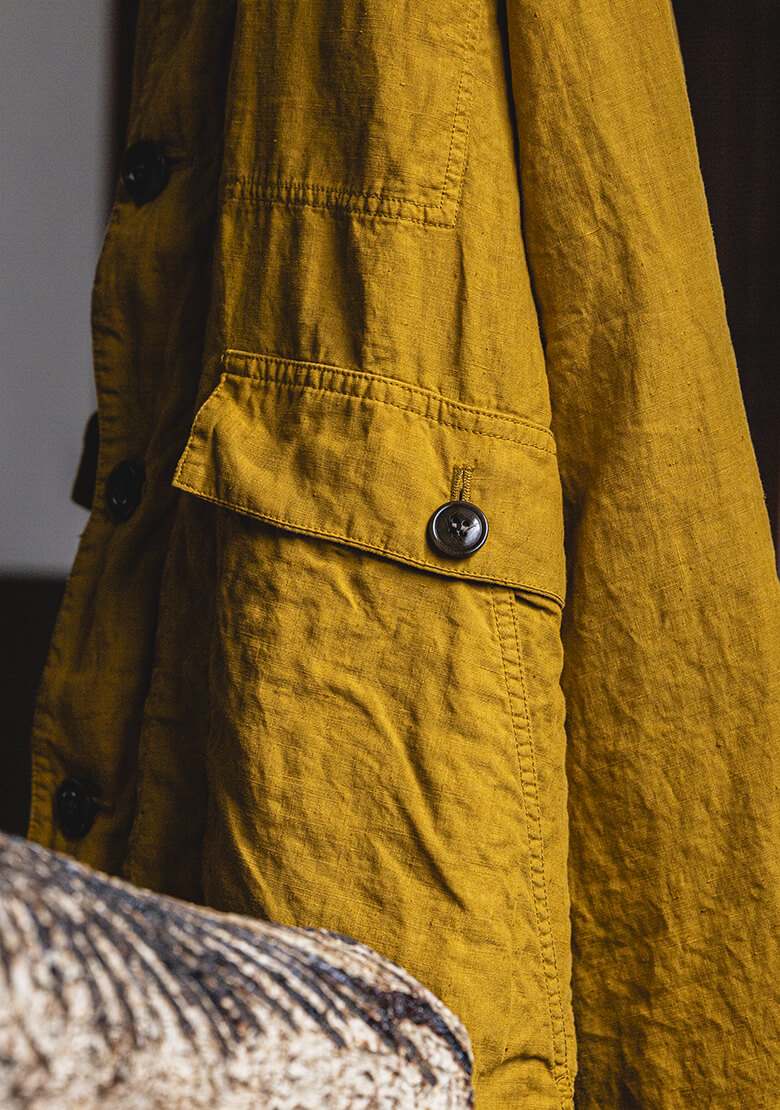
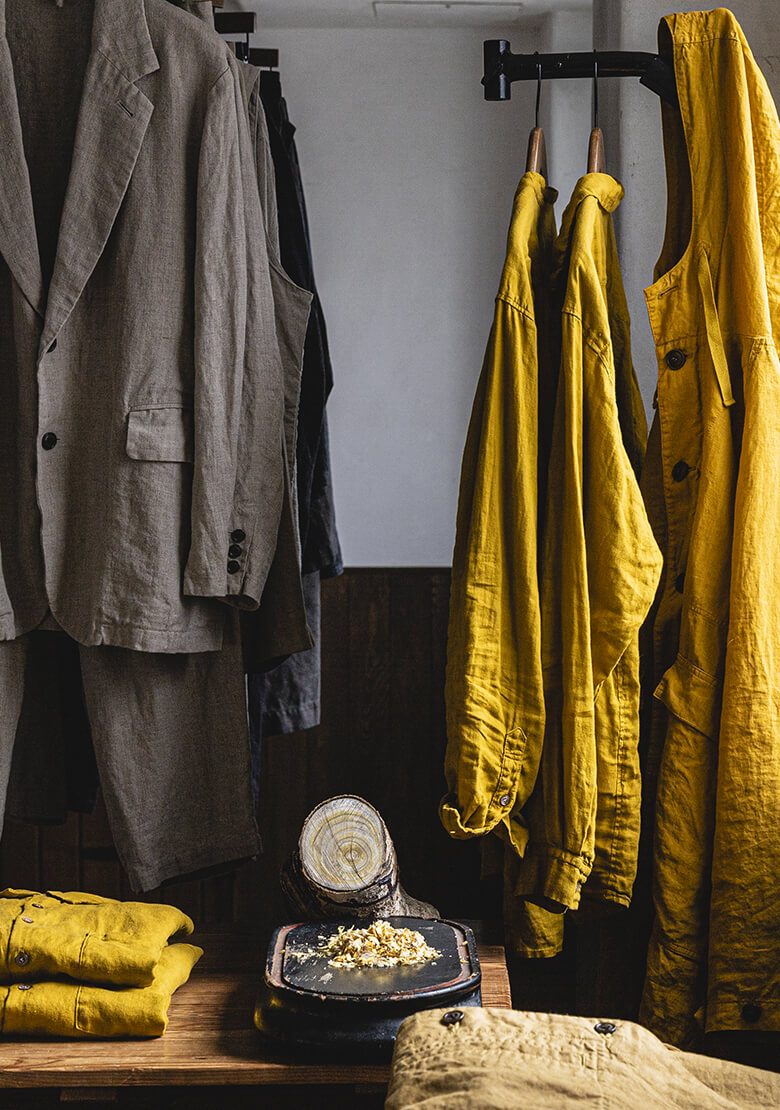
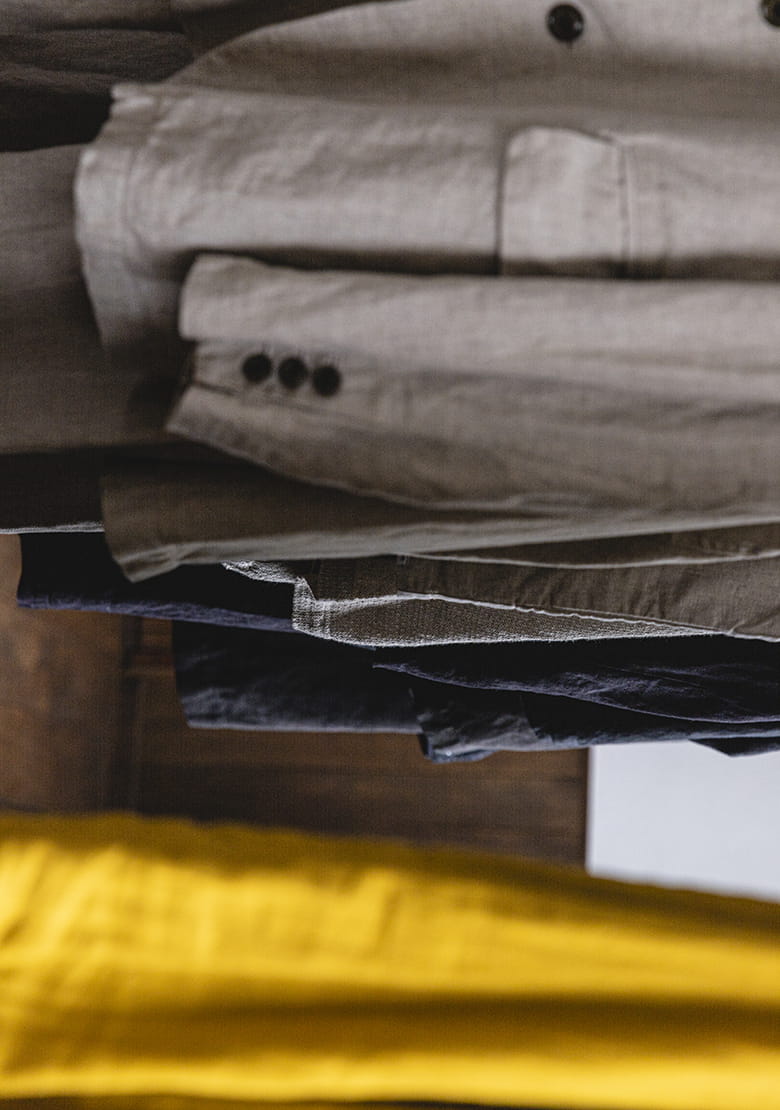
> Super Water-Repellent High Count Linen Parka in Urushi-Dye
> Urushi-Dyed Linen Lightweight Regular Collar Shirt
> Urushi-Dyed Linen Lightweight Band Collar Shirt
> Urushi-Dyed Washi Linen Gardener Vest
> Urushi-Dyed Washi Linen Work Pants

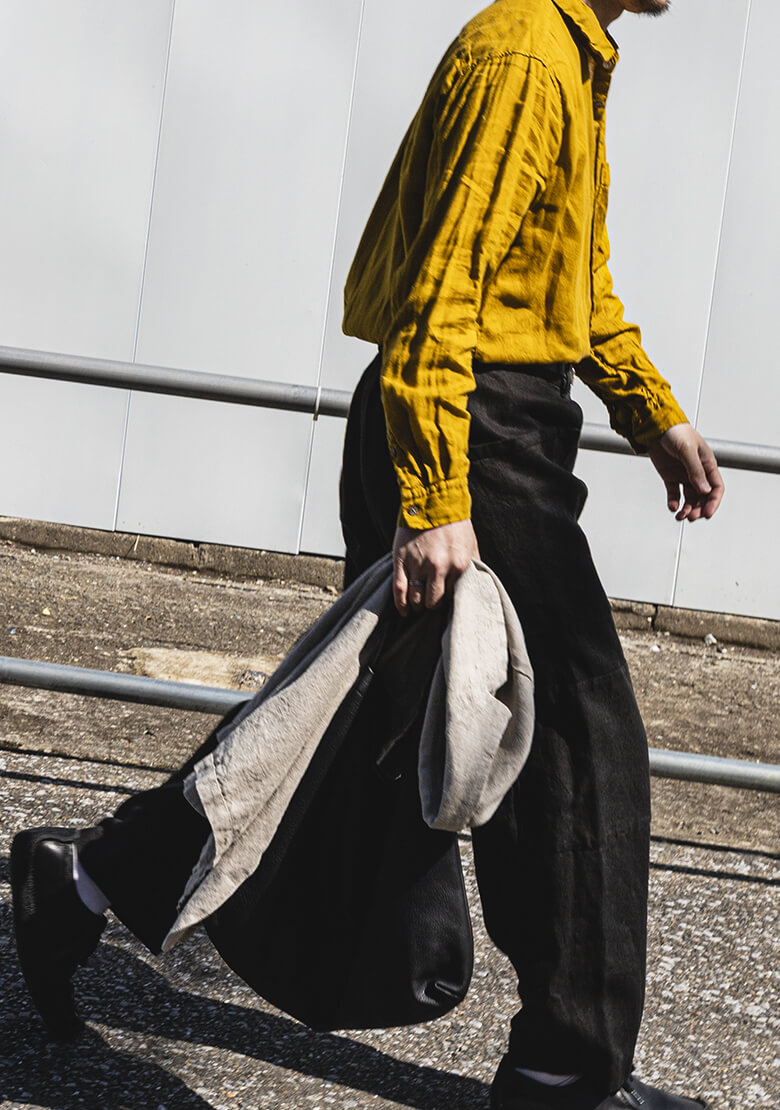


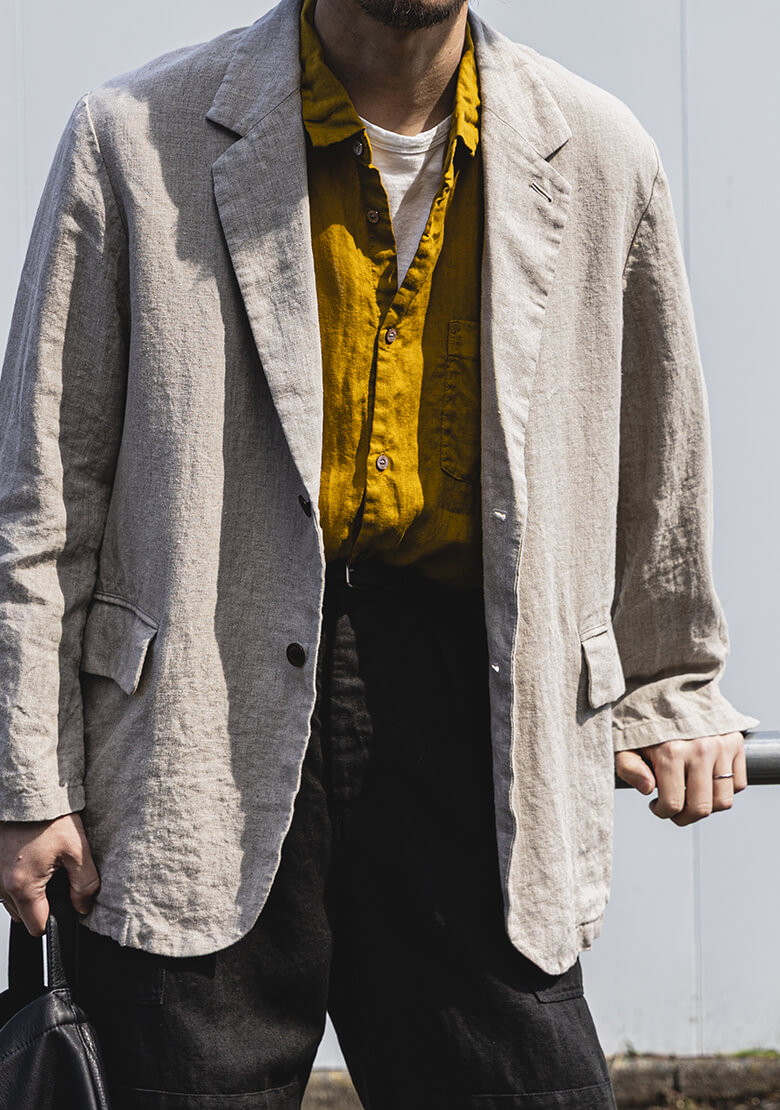
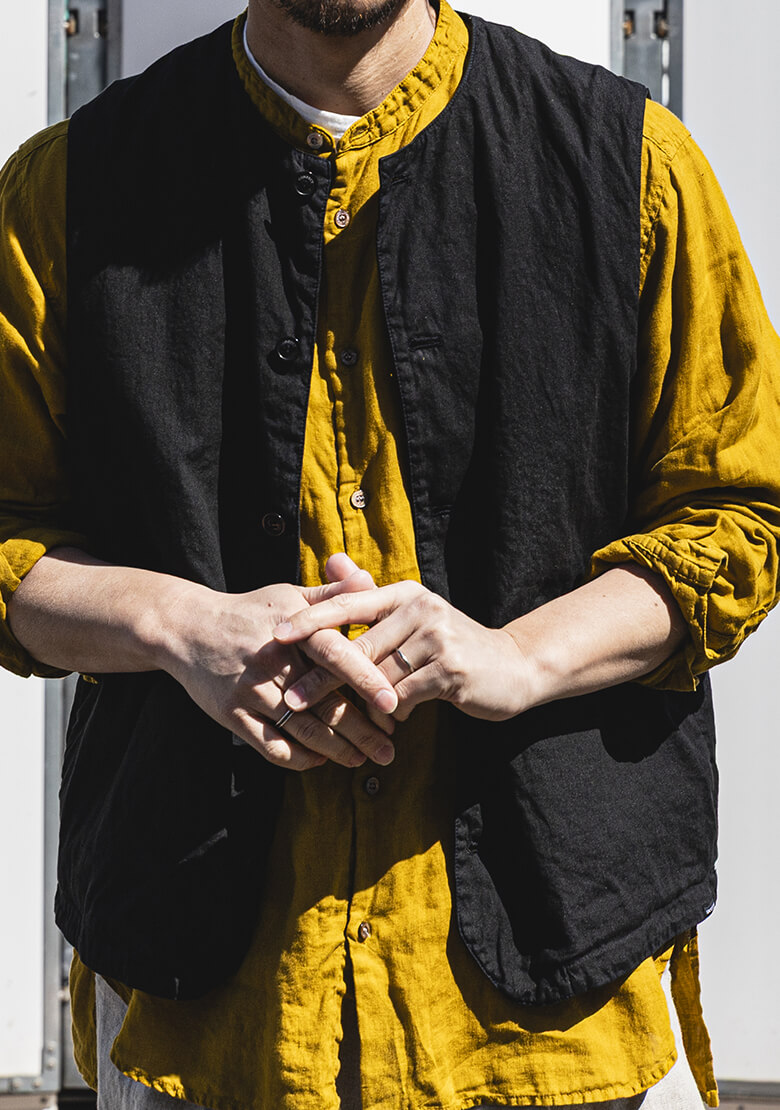

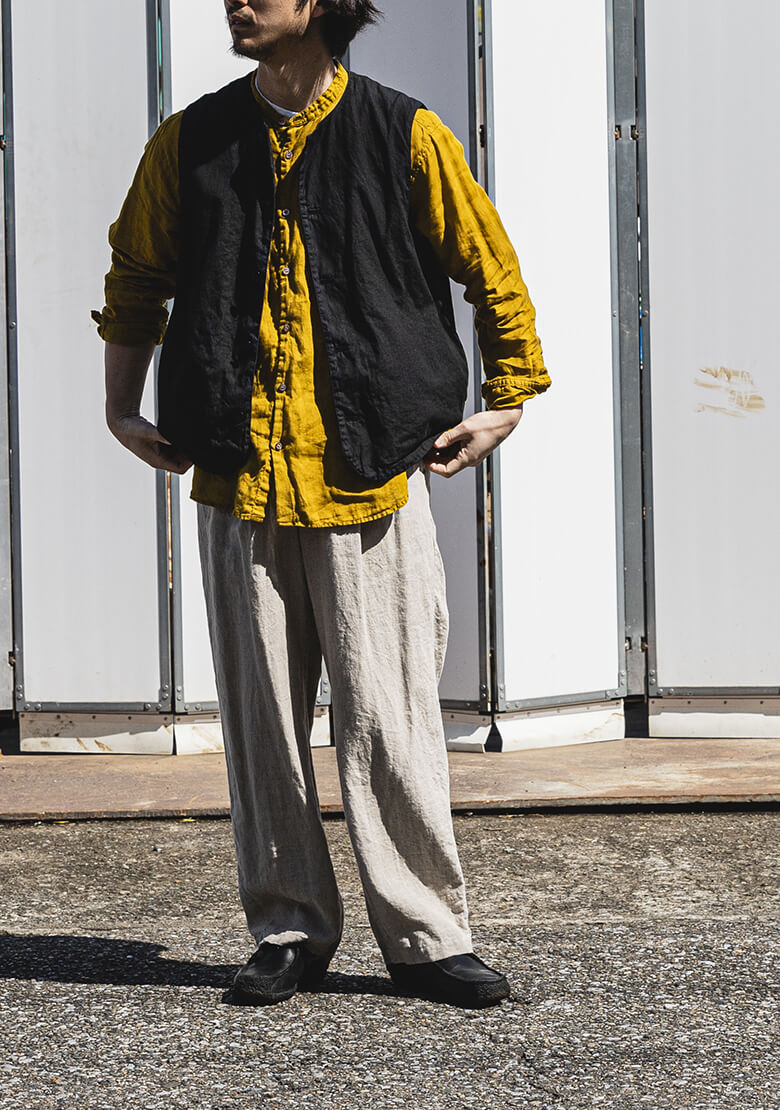


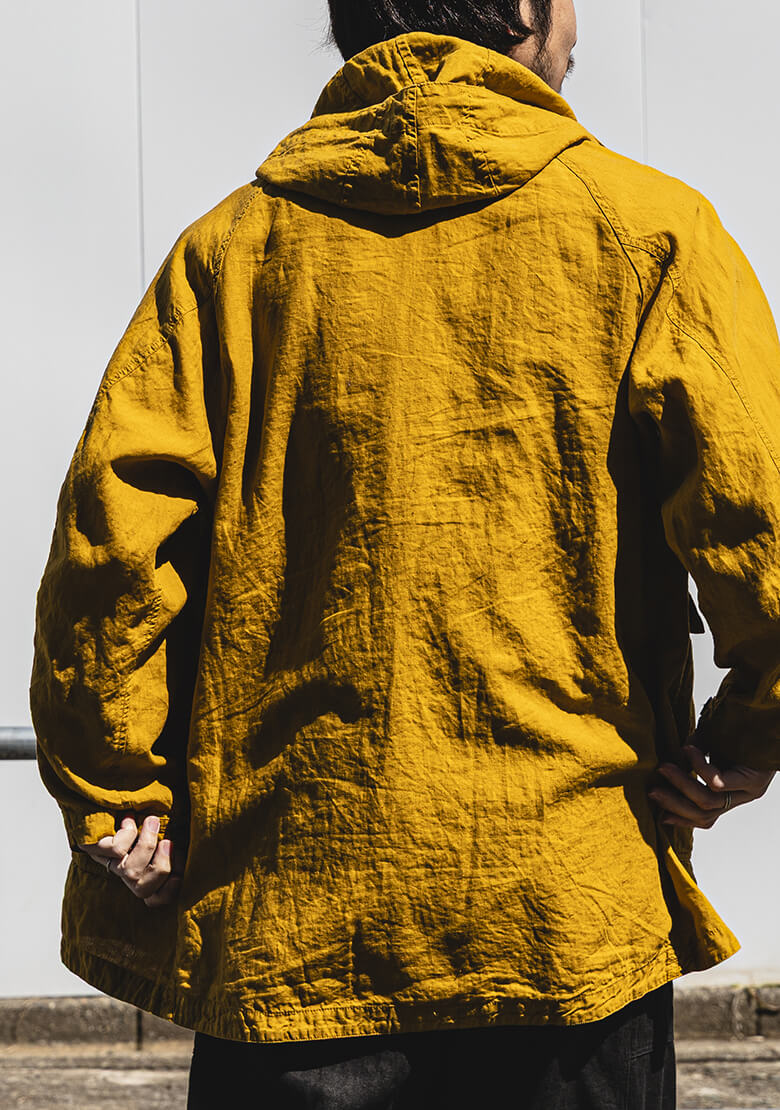
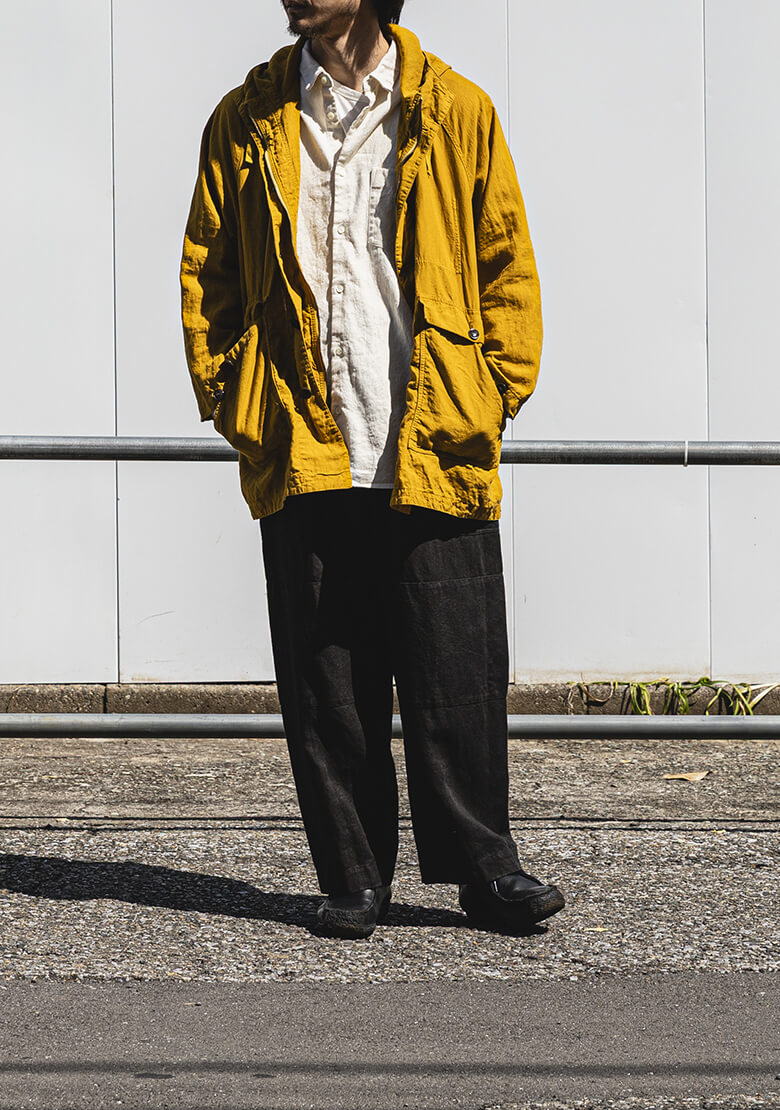
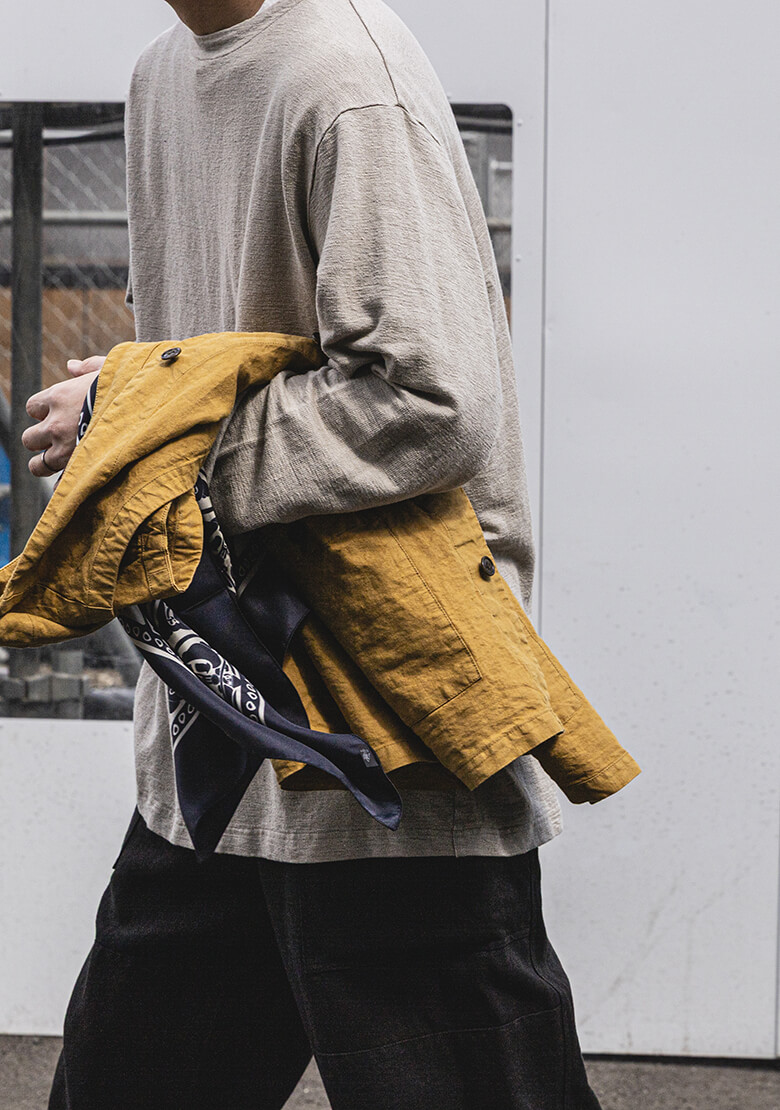

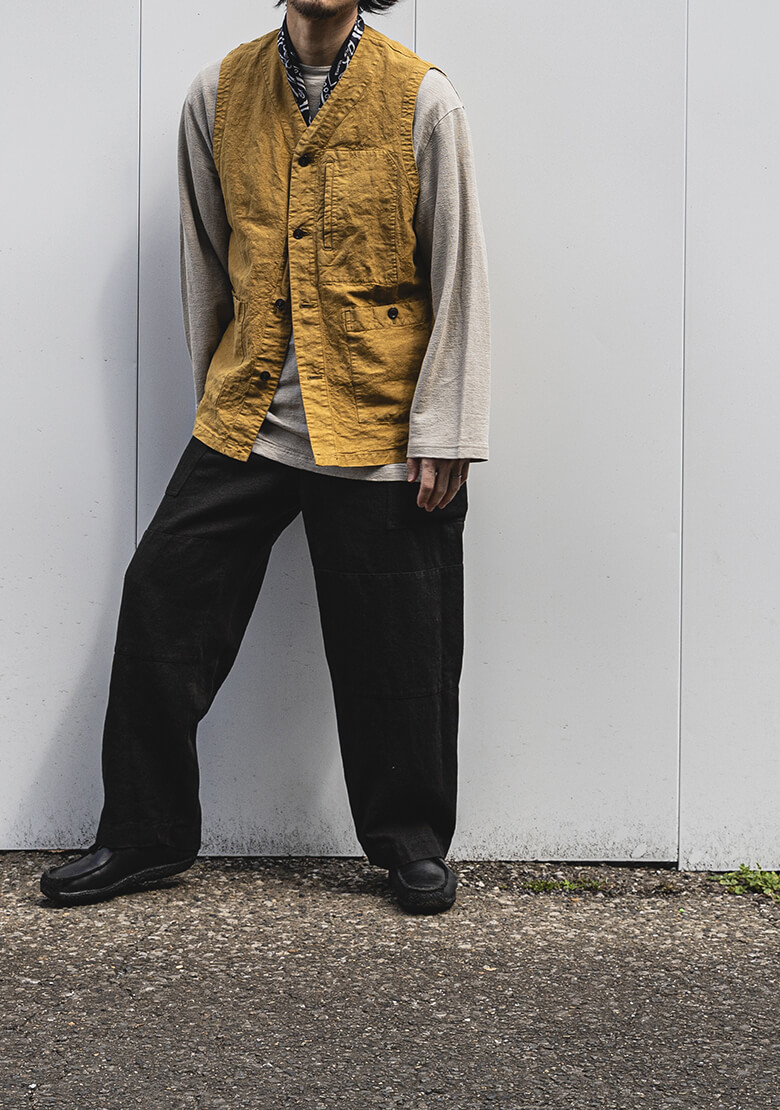

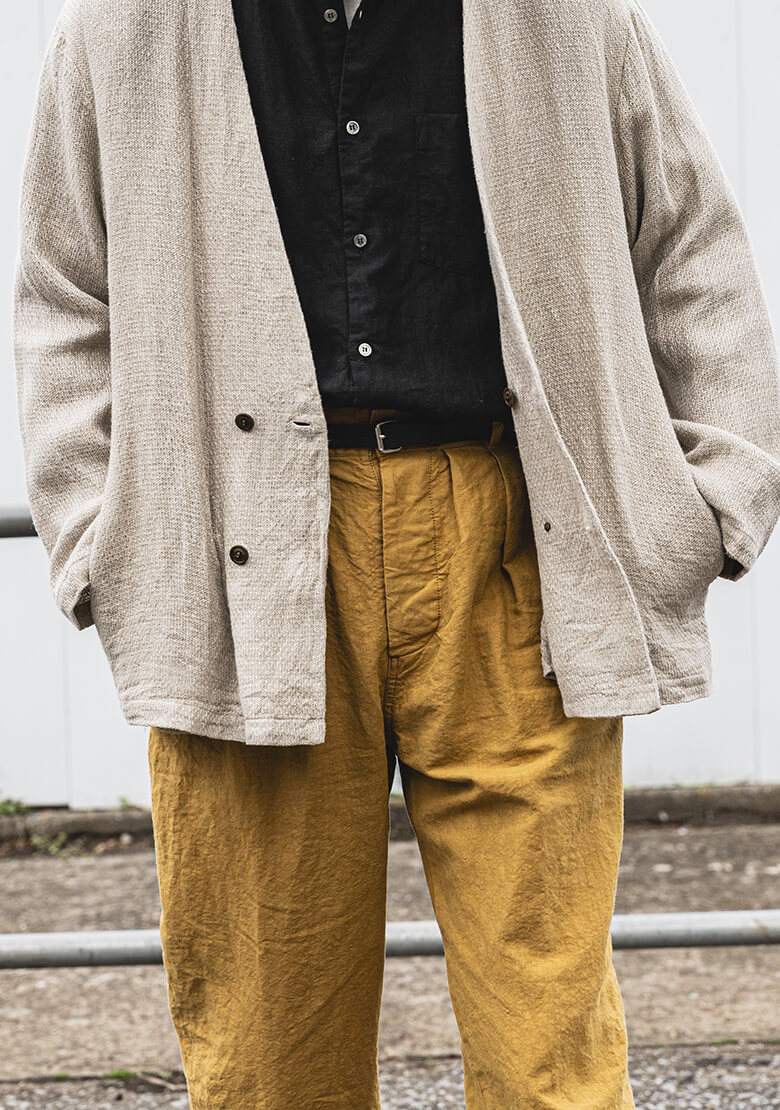

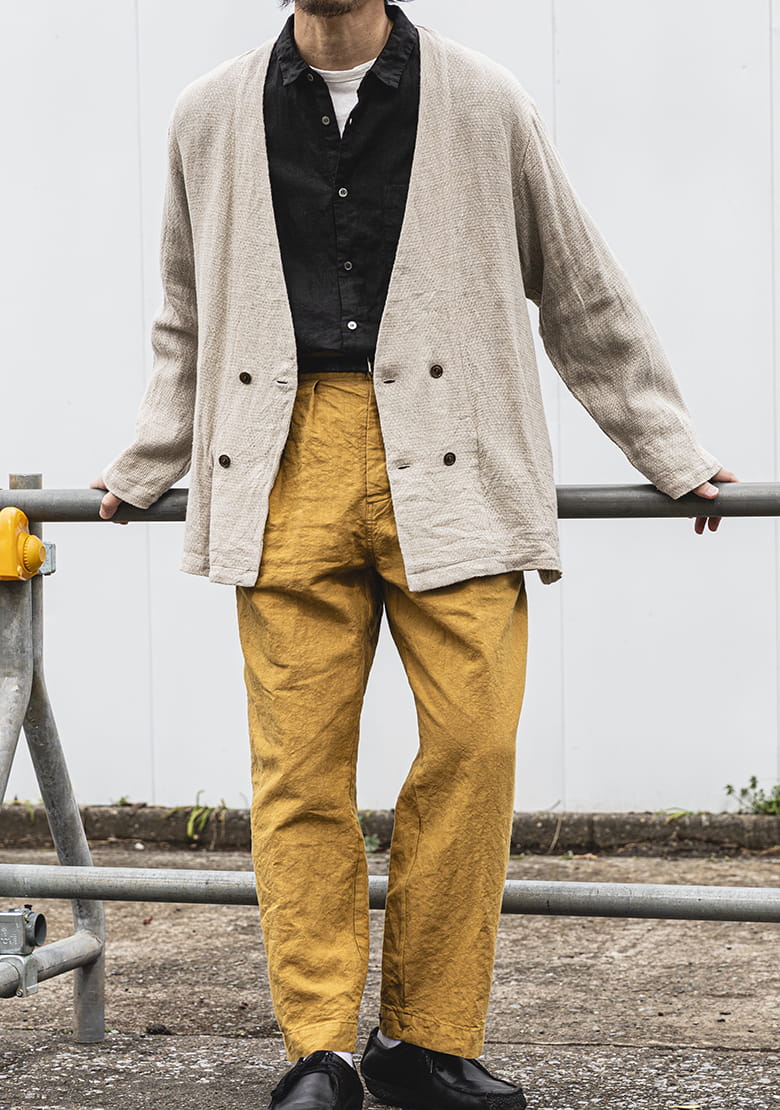
【Product Introduction】

【25SS LOOK MOVIE】

Available for worldwide shipping at our International Online Store
-Super Water-Repellent High Count Linen Parka in Urushi-Dye
-Urushi-Dyed Linen Lightweight Regular Collar Shirt
-Urushi-Dyed Linen Lightweight Band Collar Shirt
-Urushi-Dyed Washi Linen Gardener Vest
-Urushi-Dyed Washi Linen Work Pants



